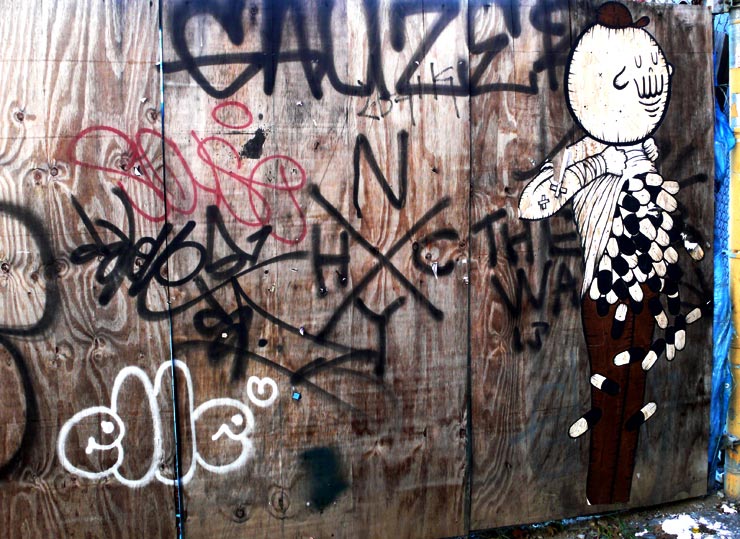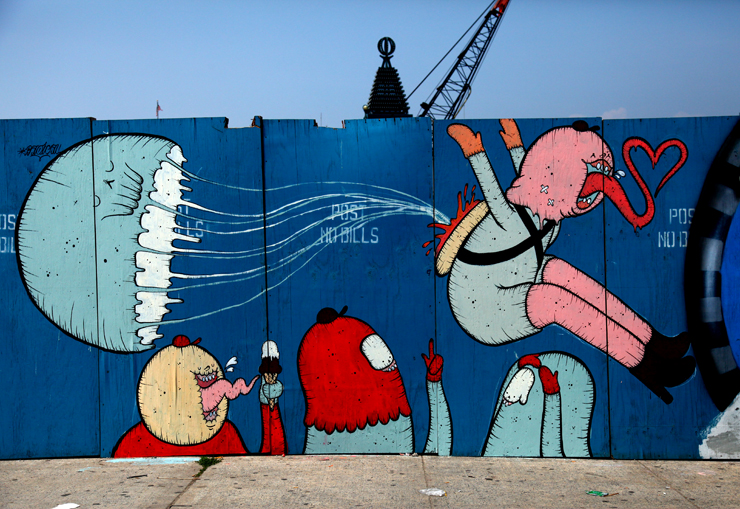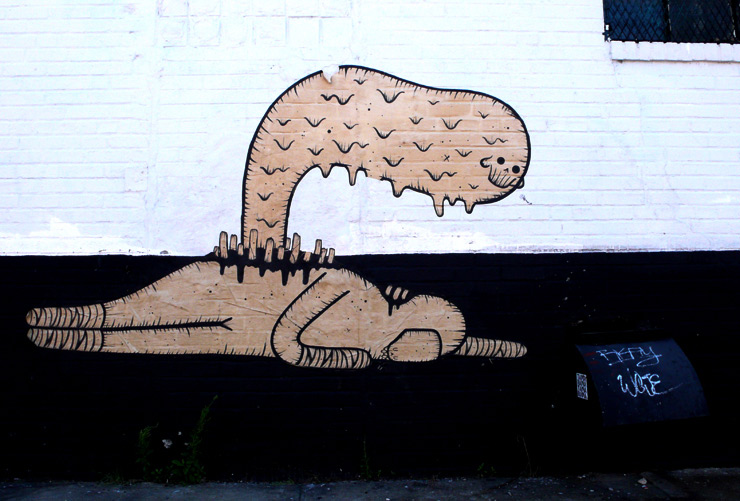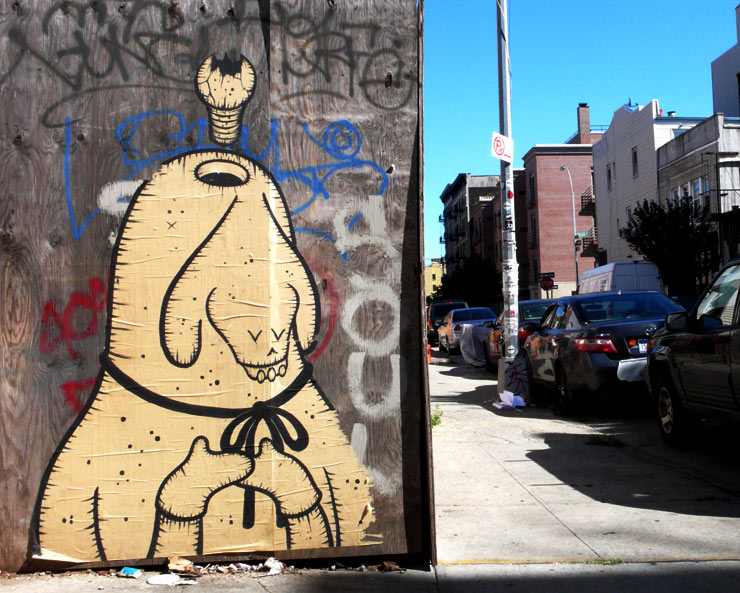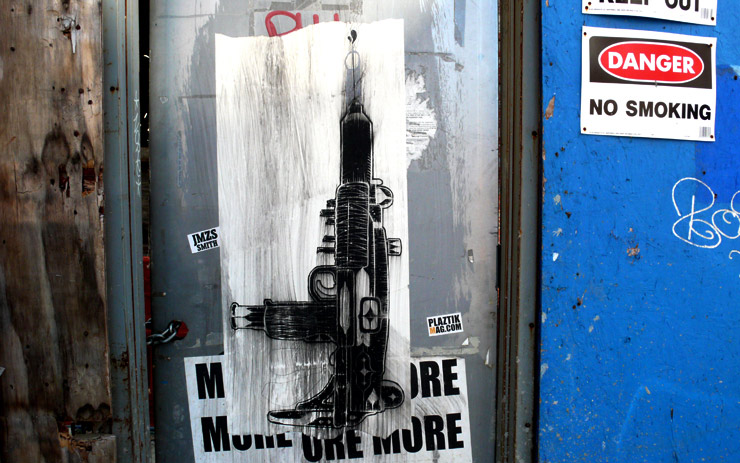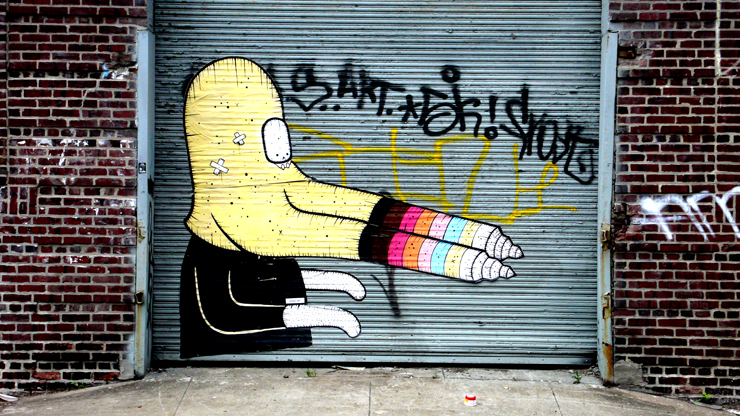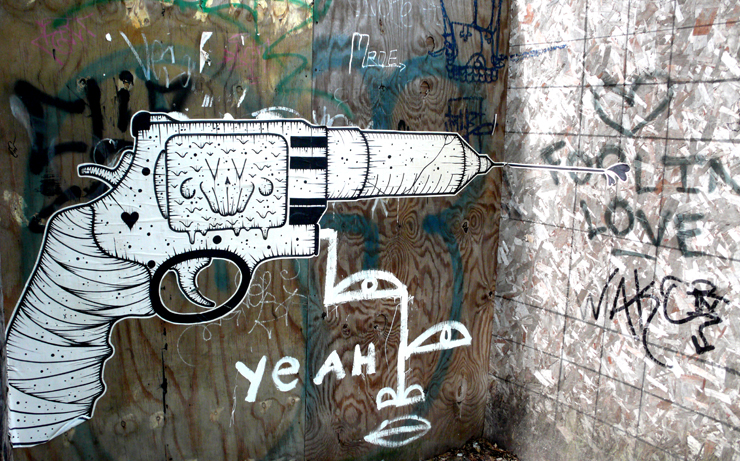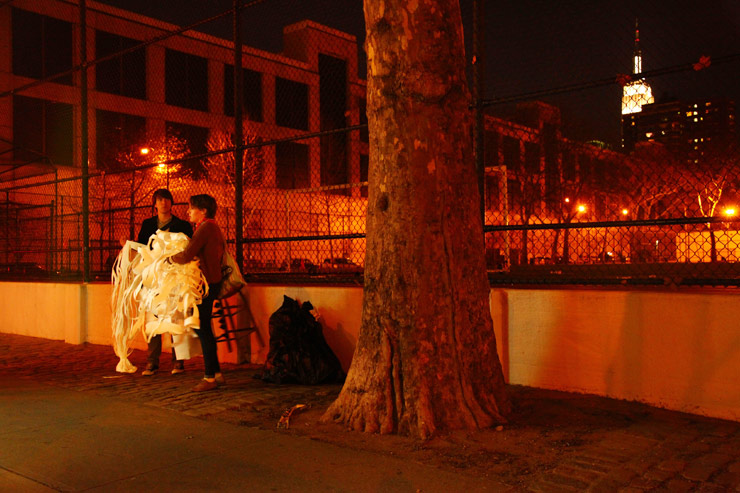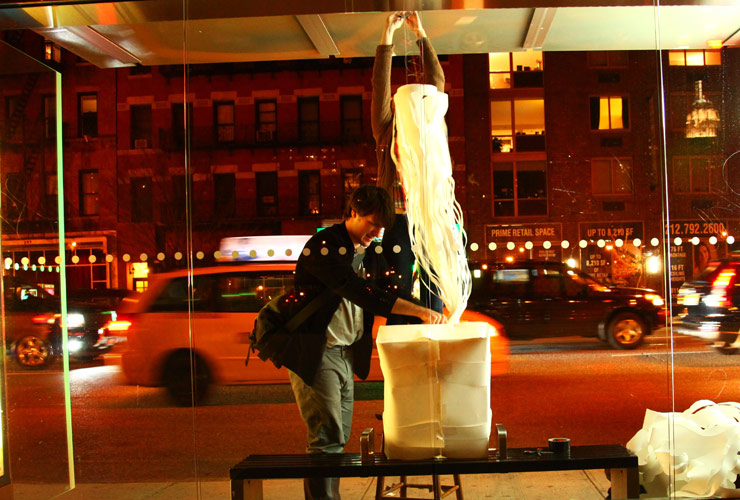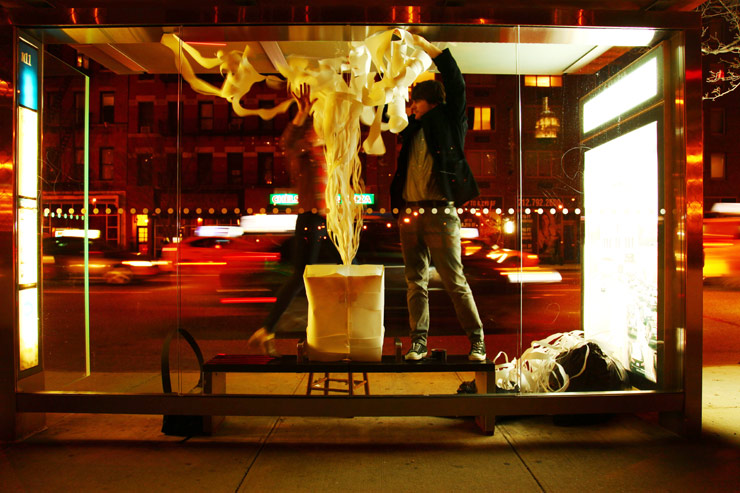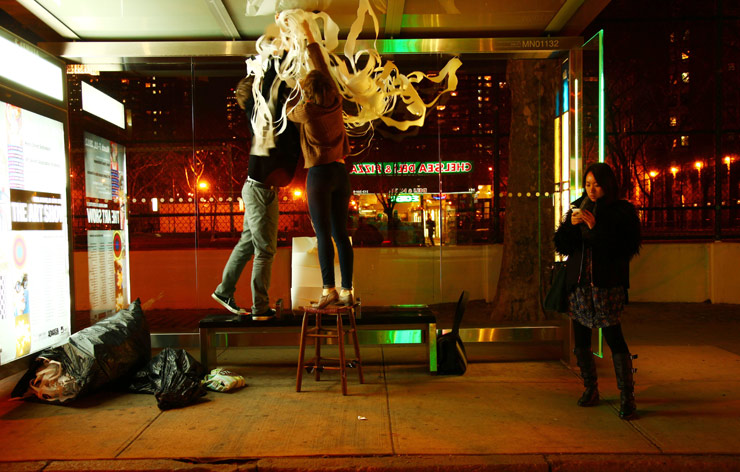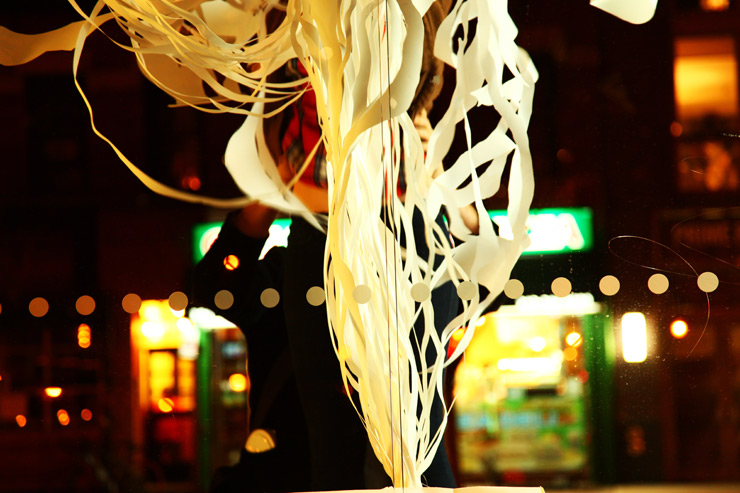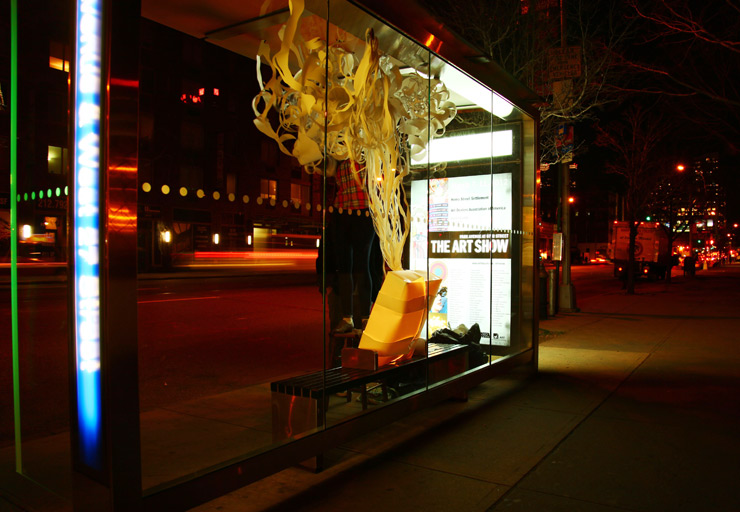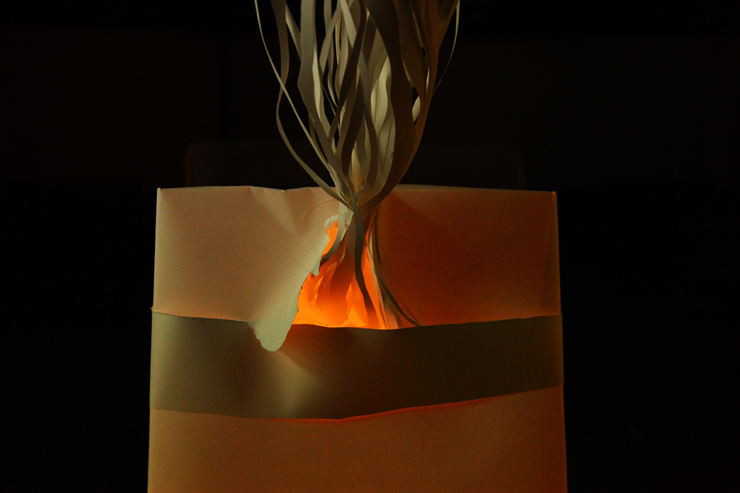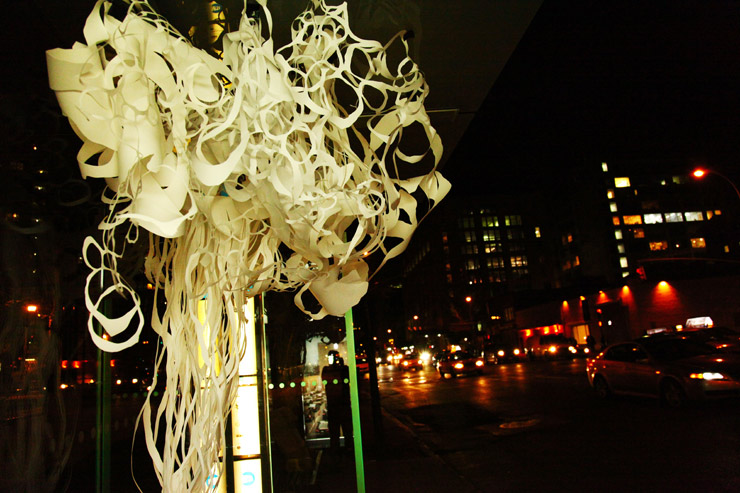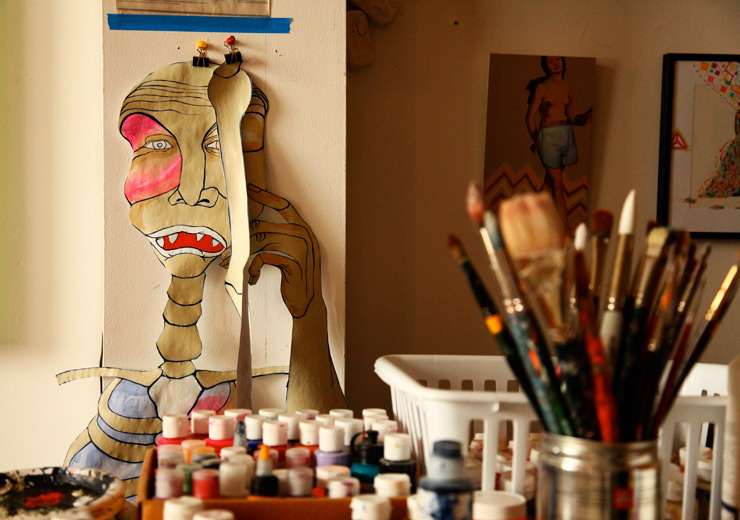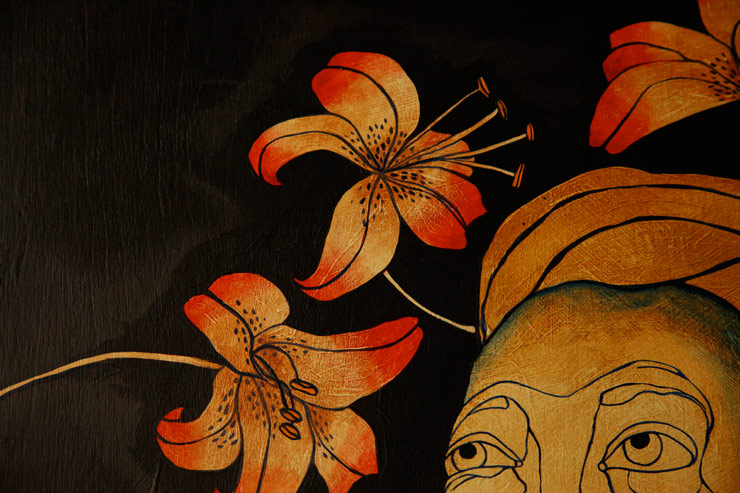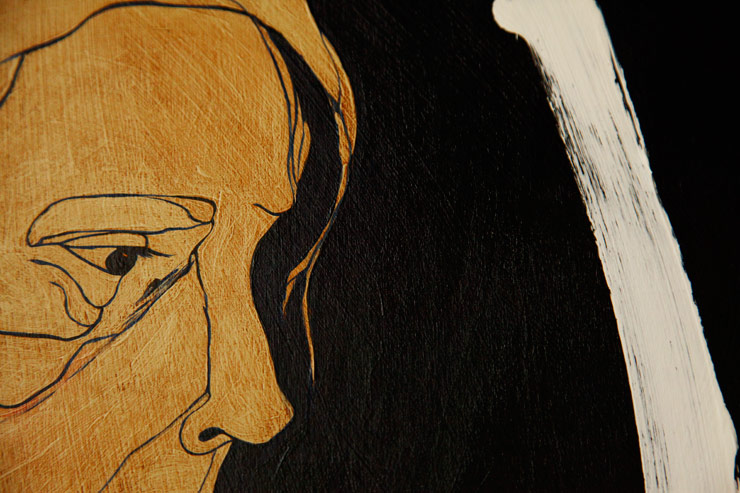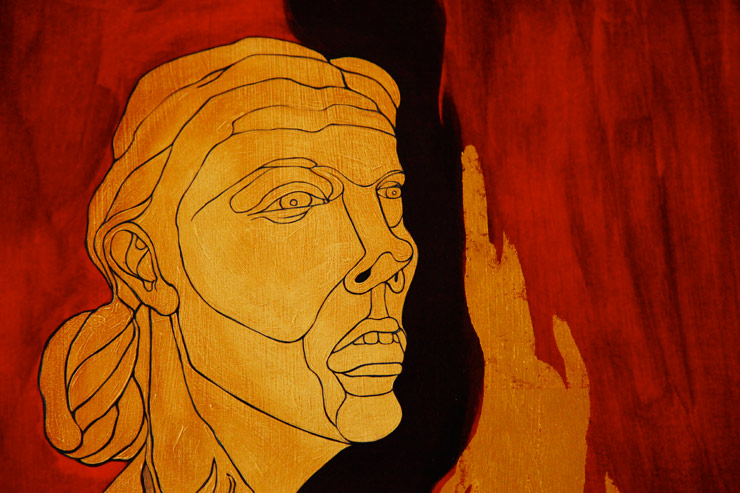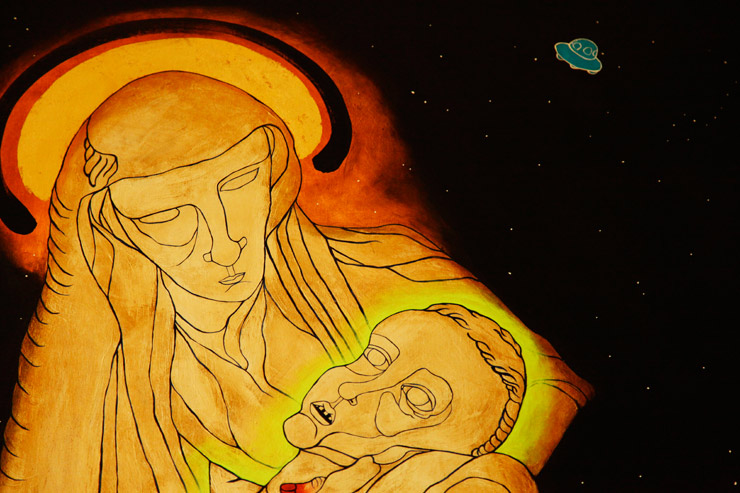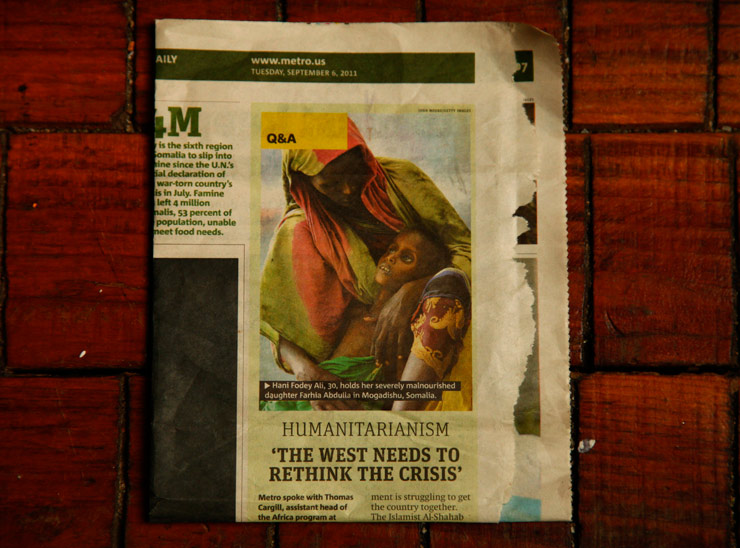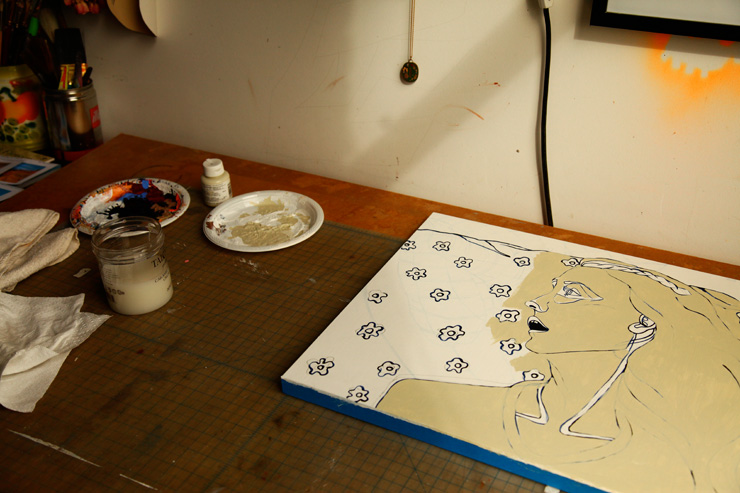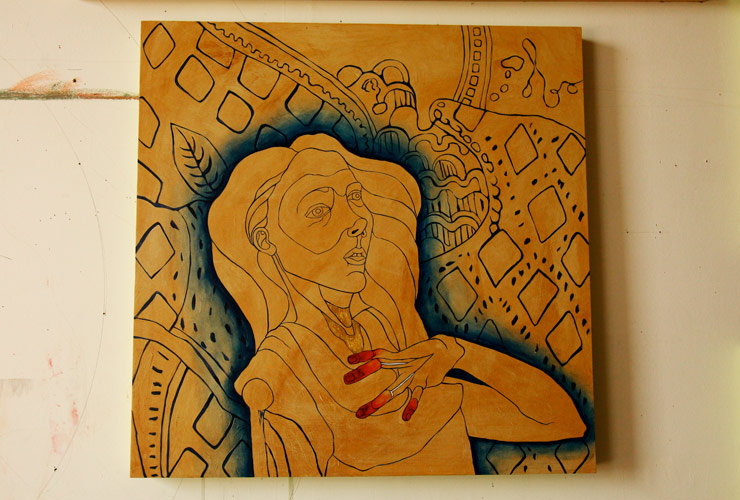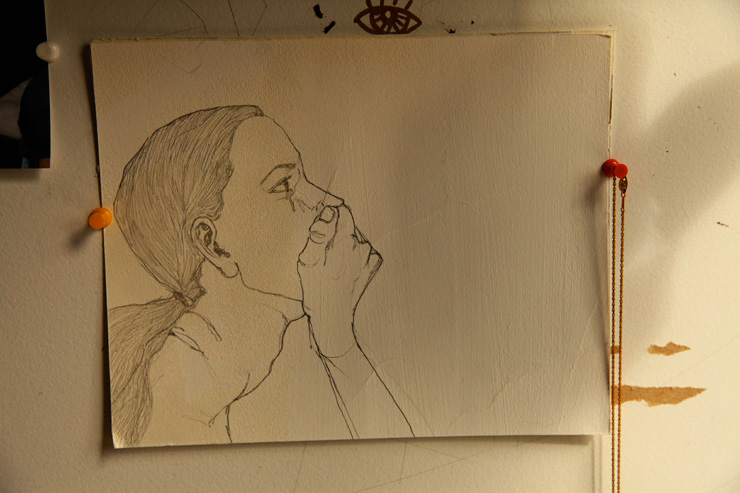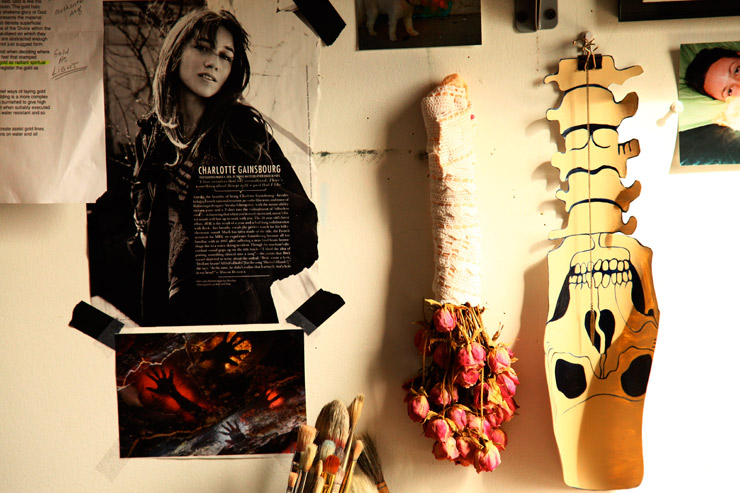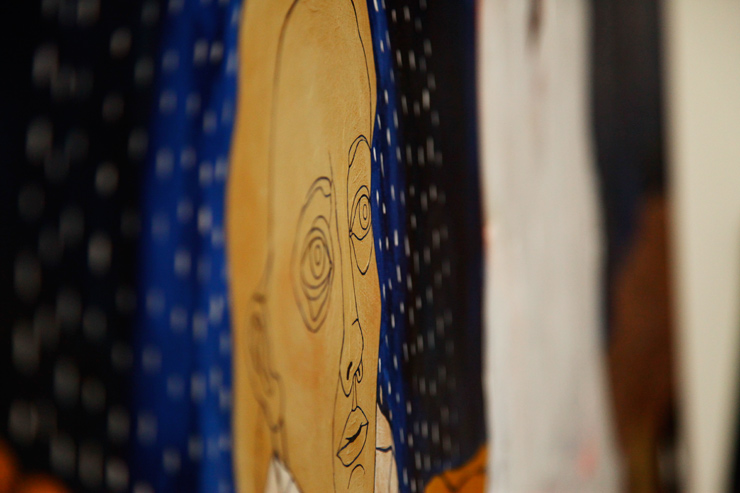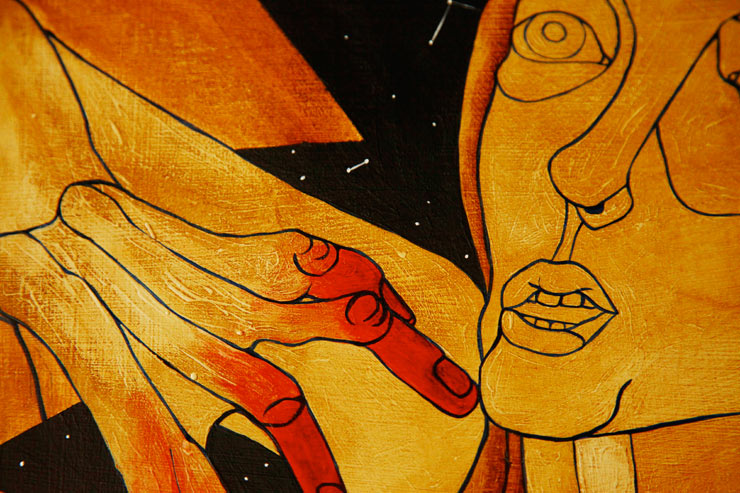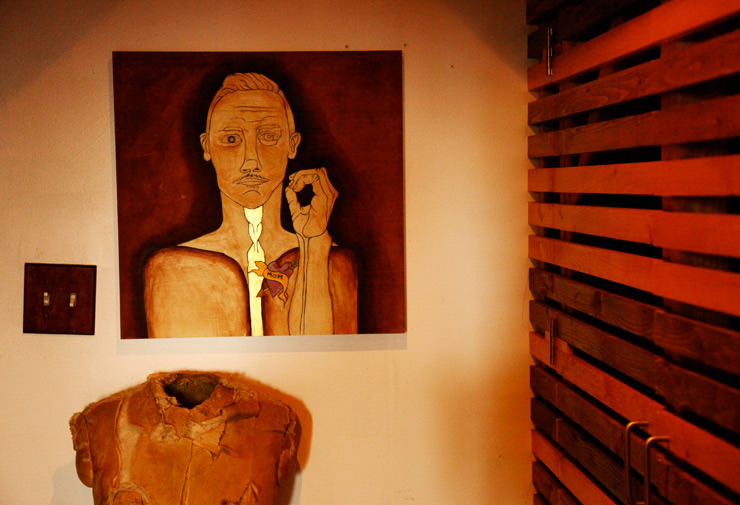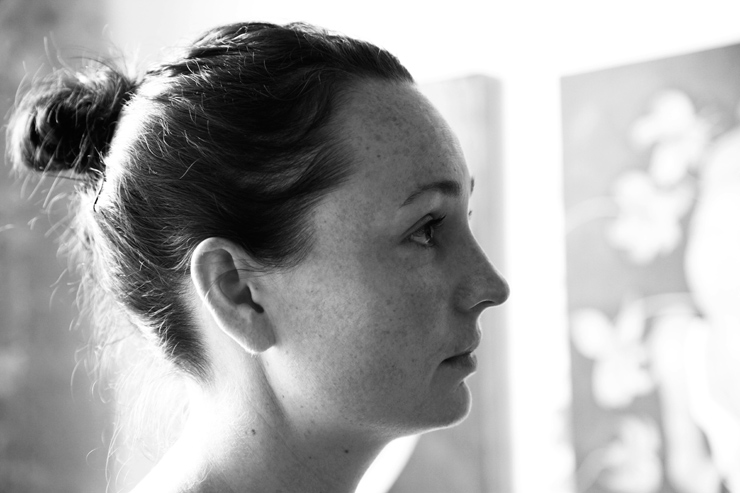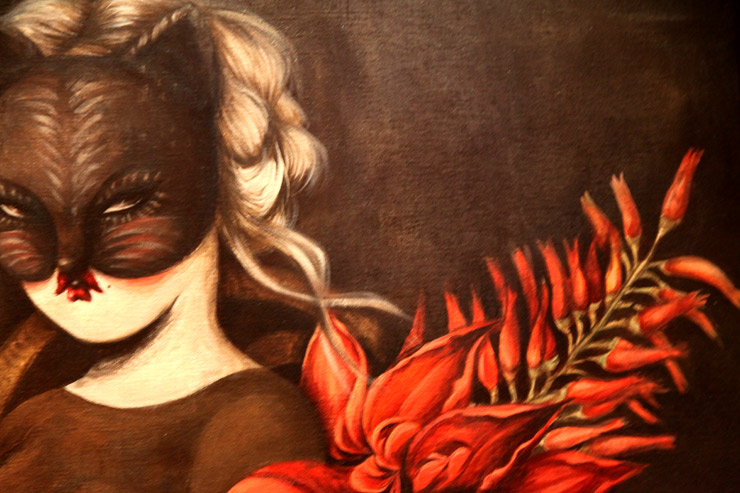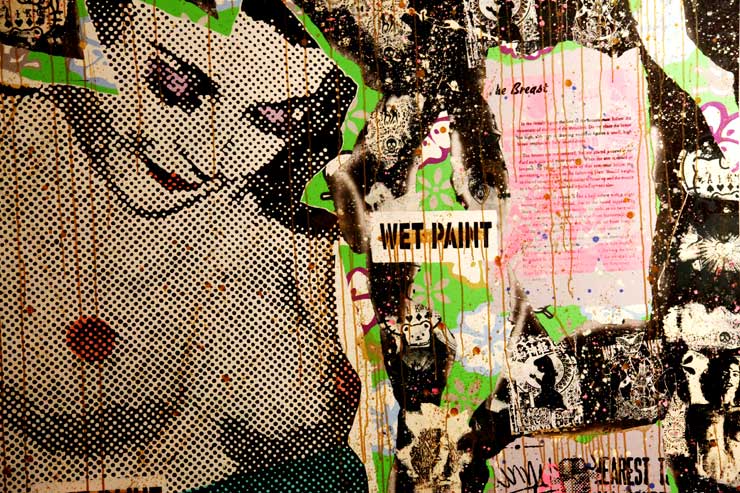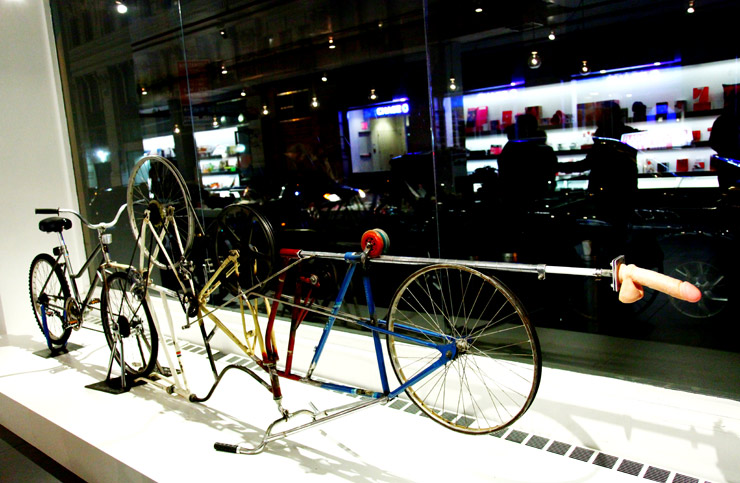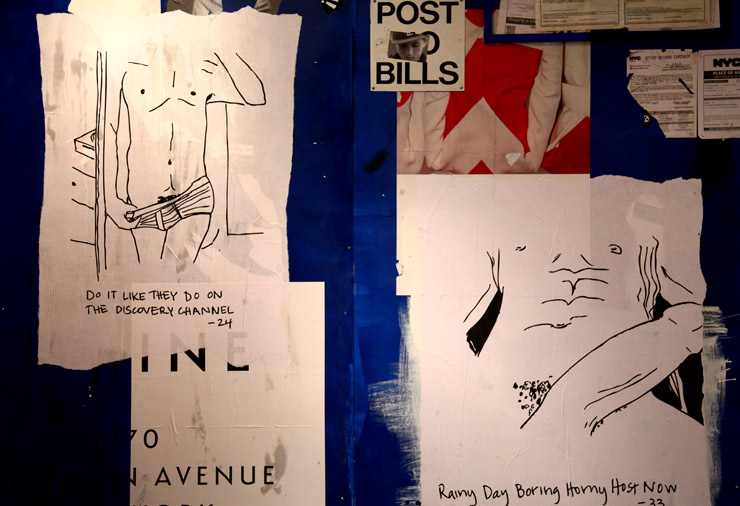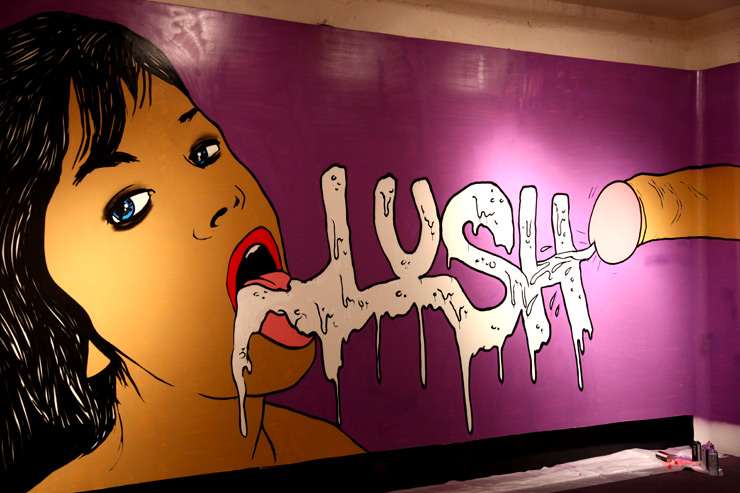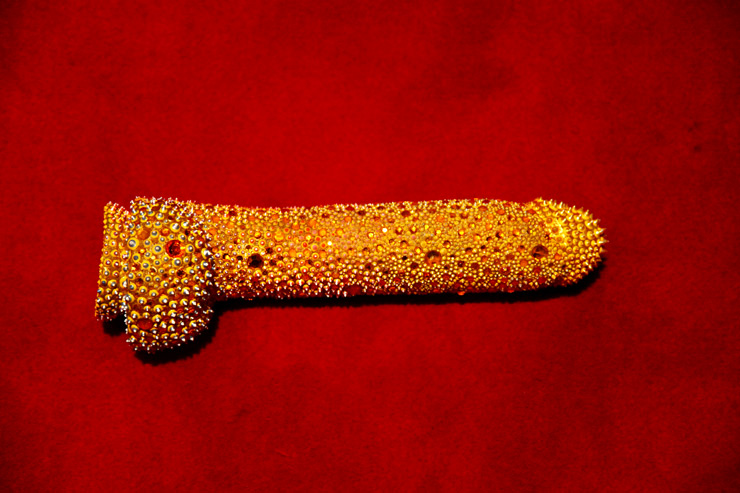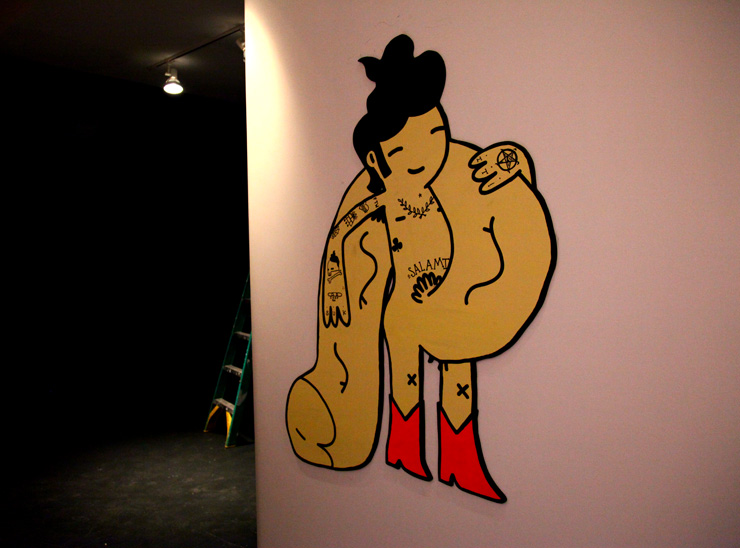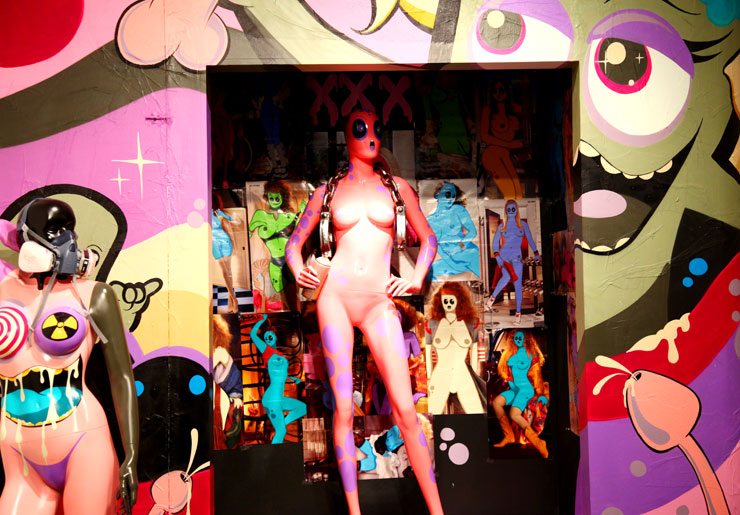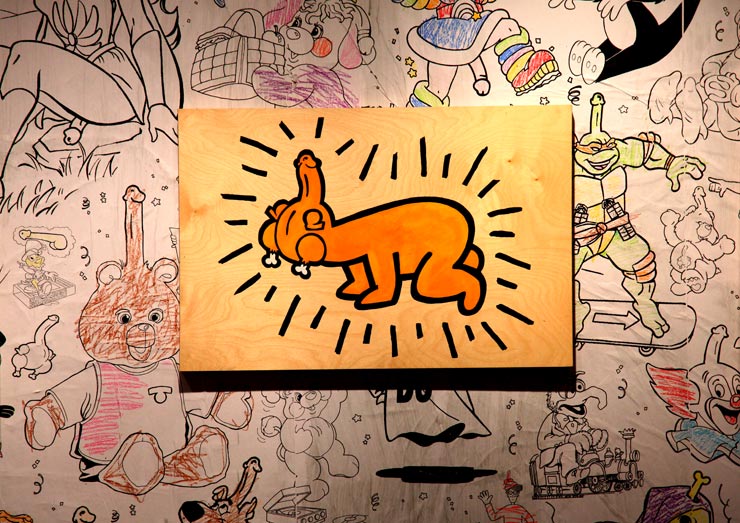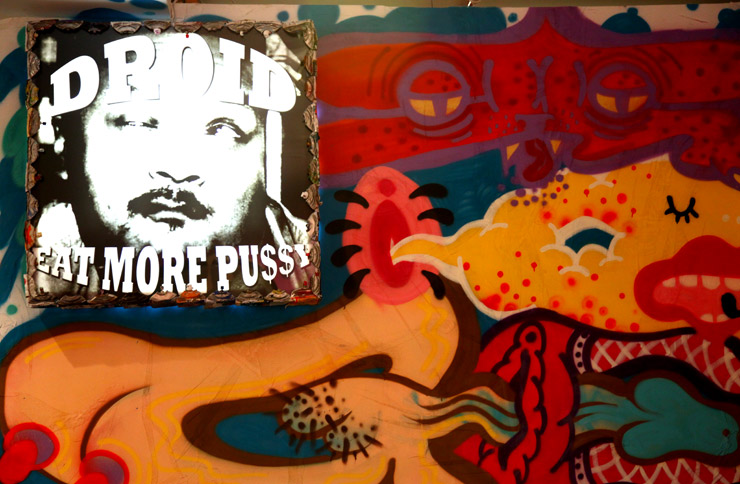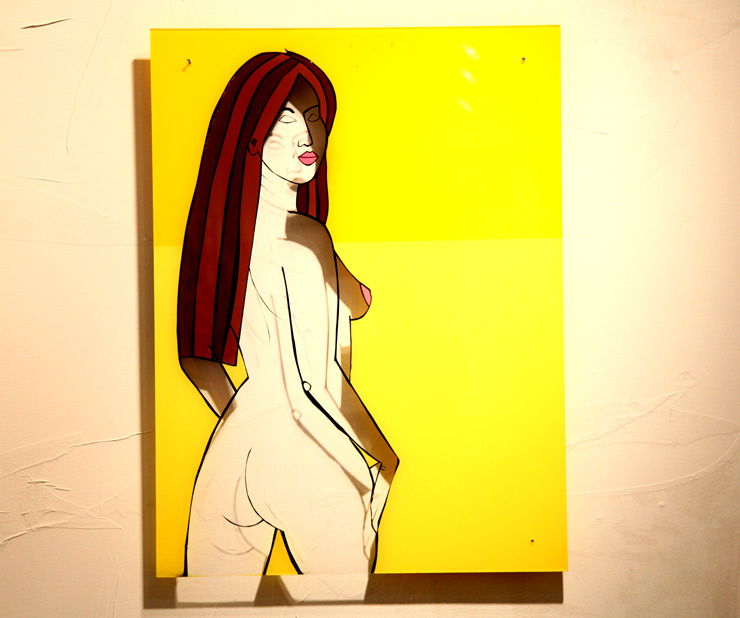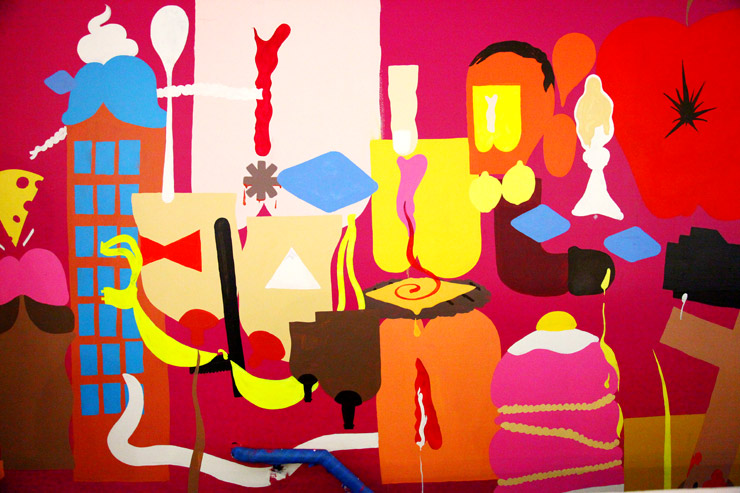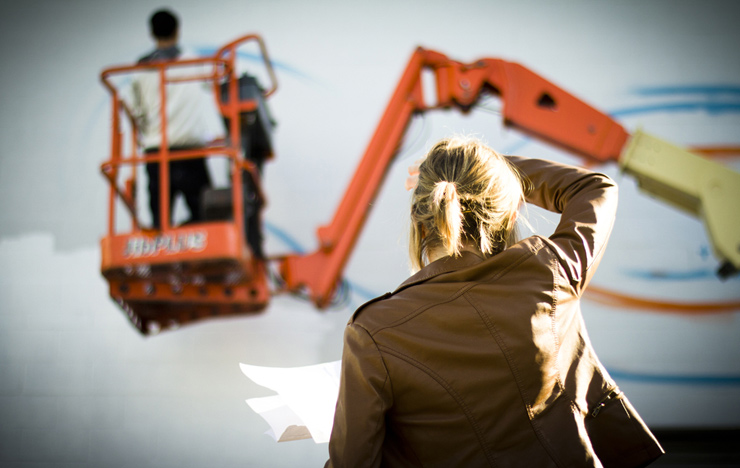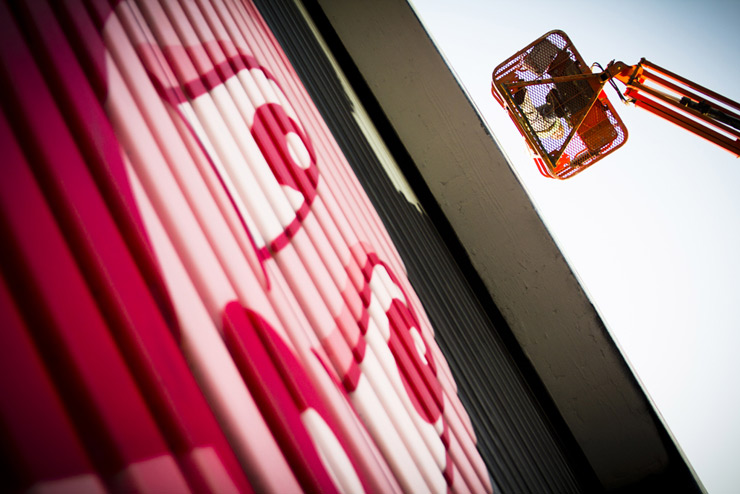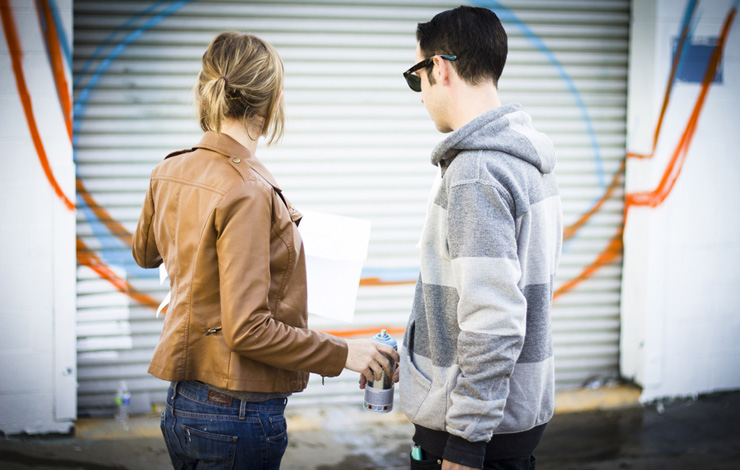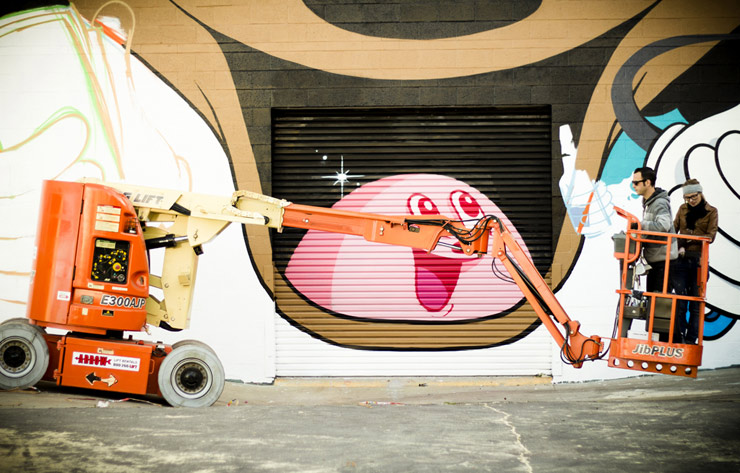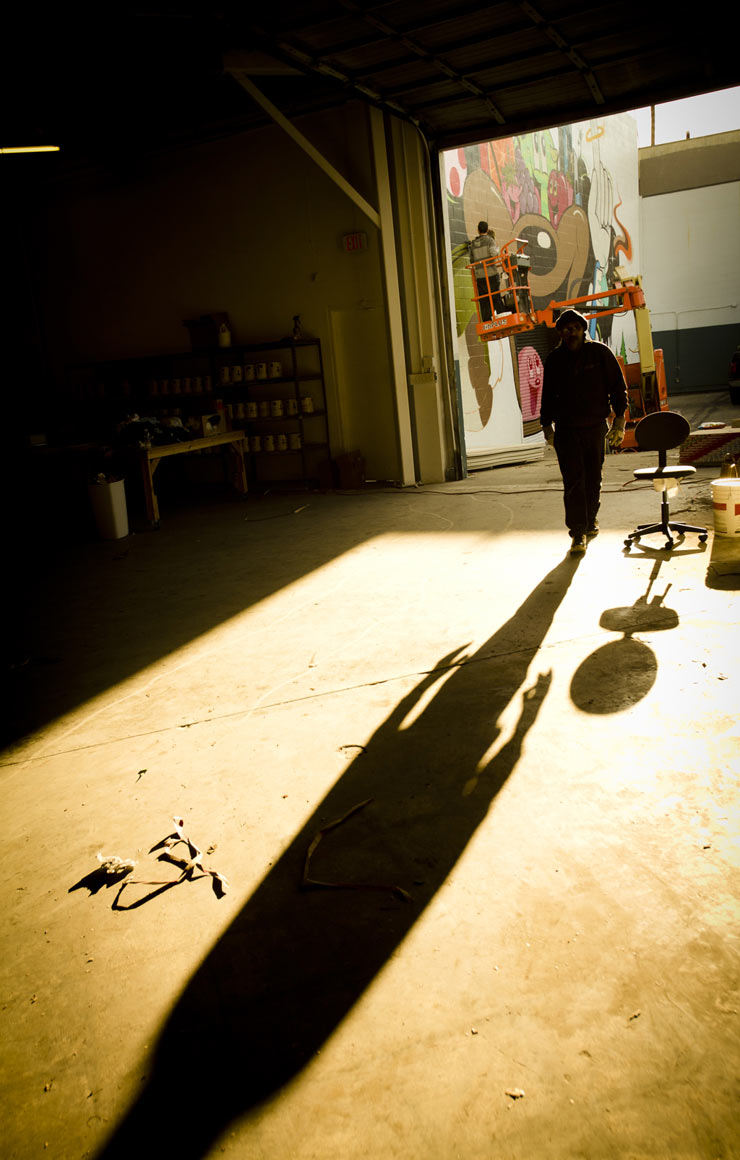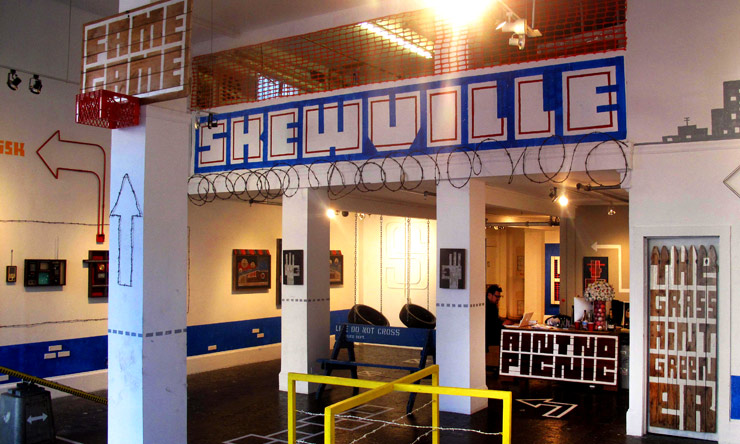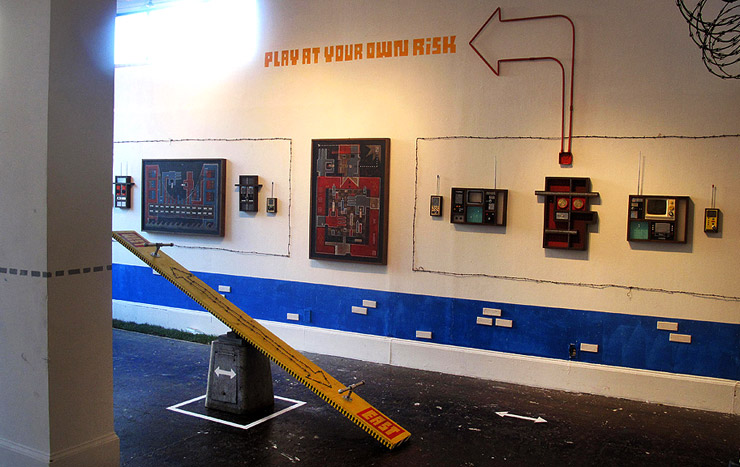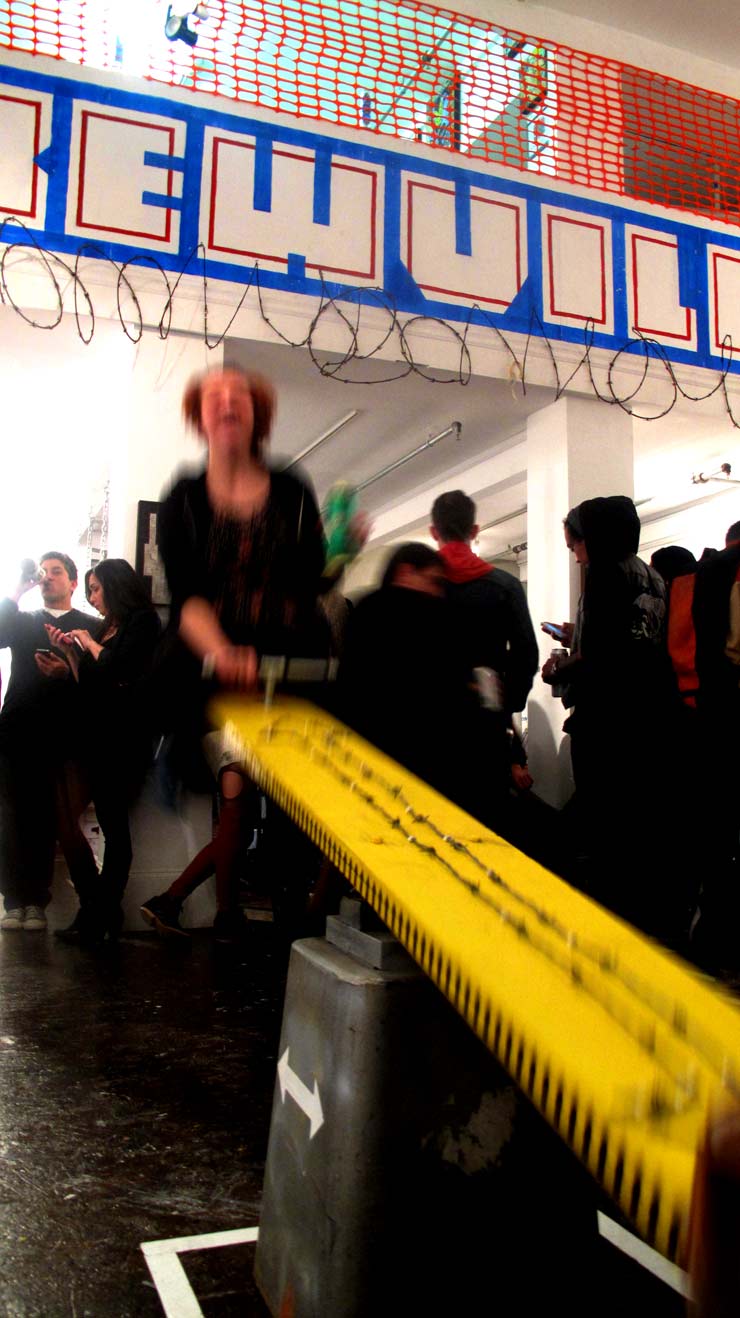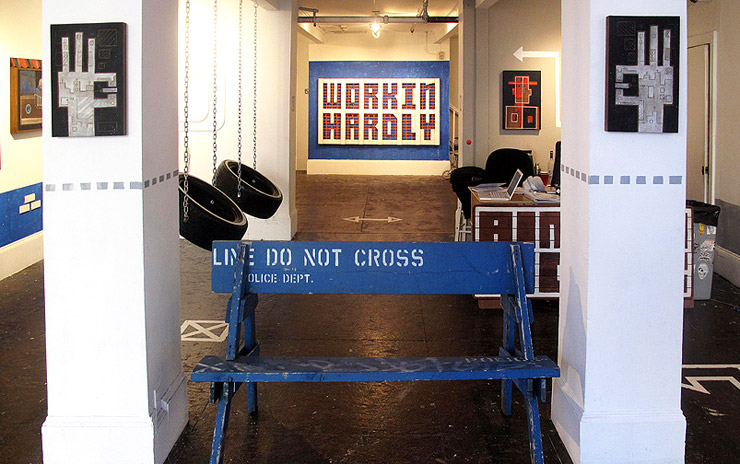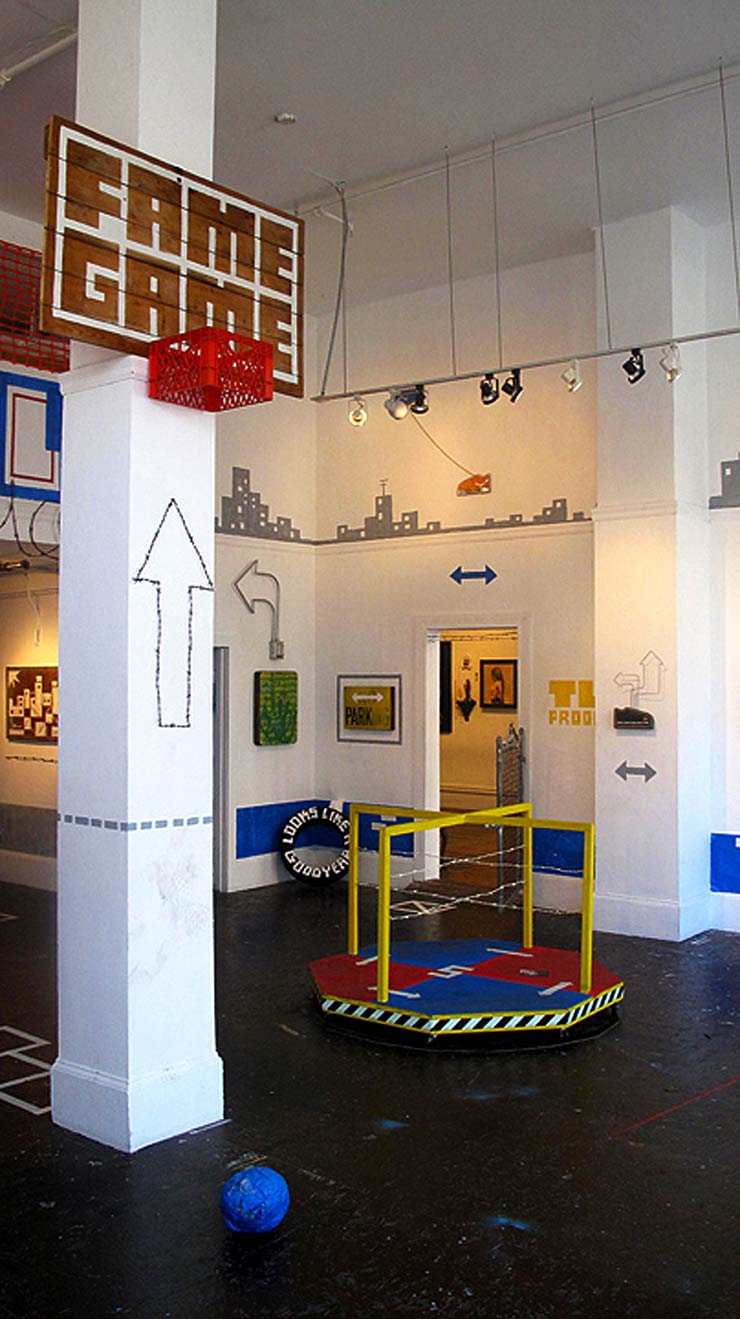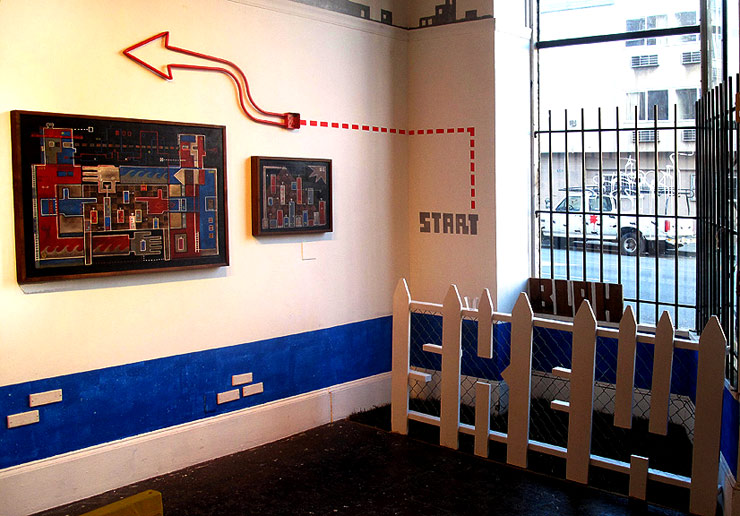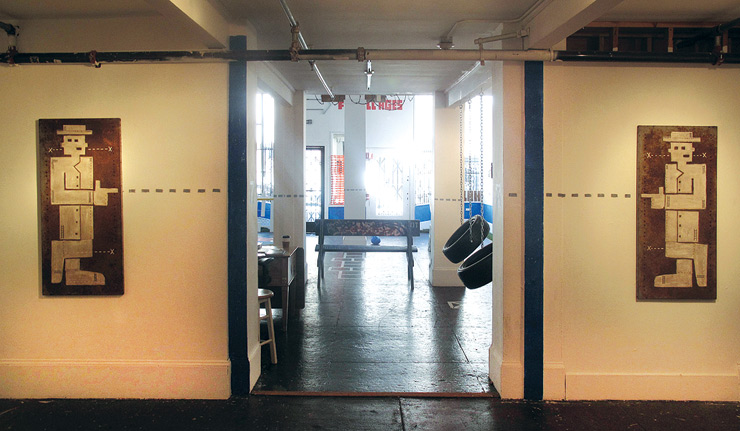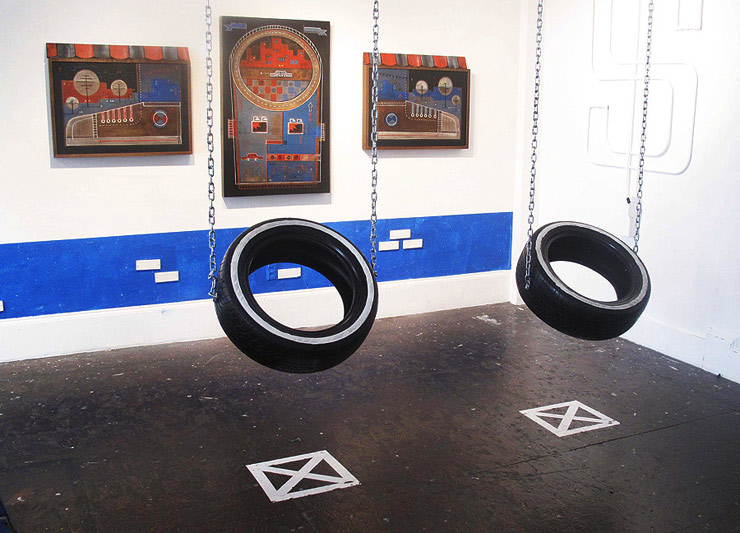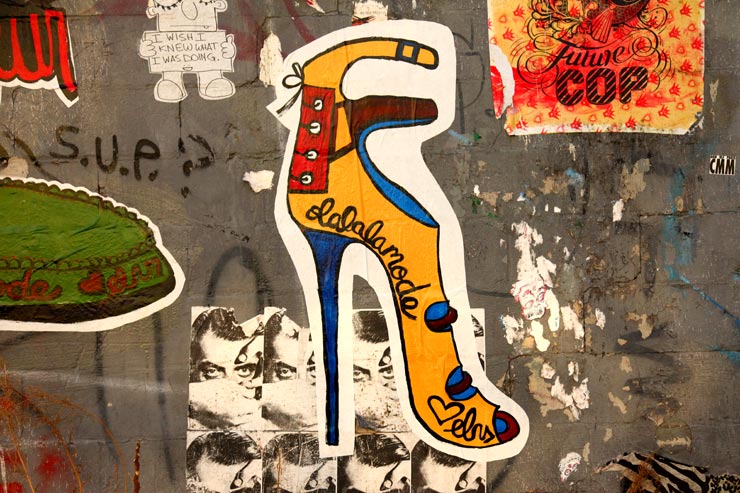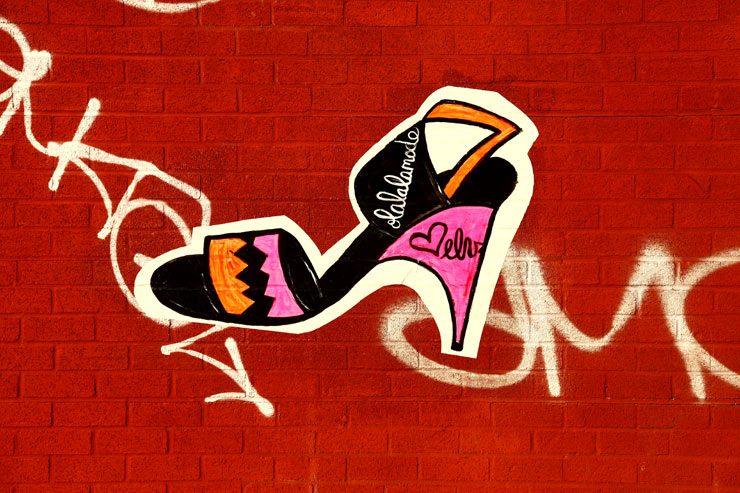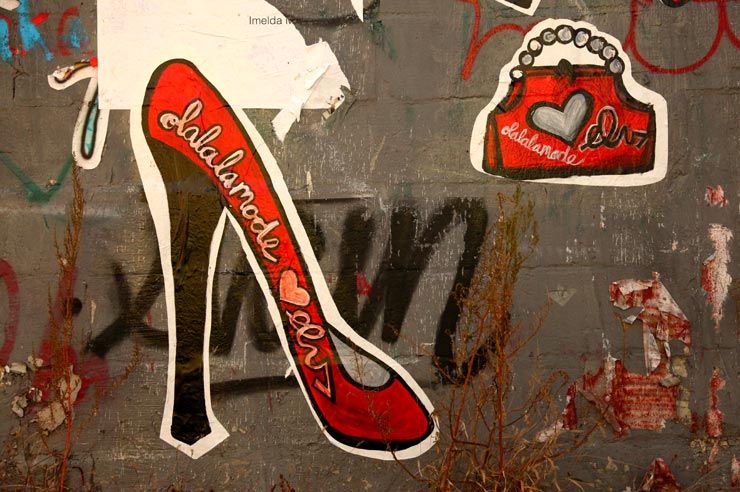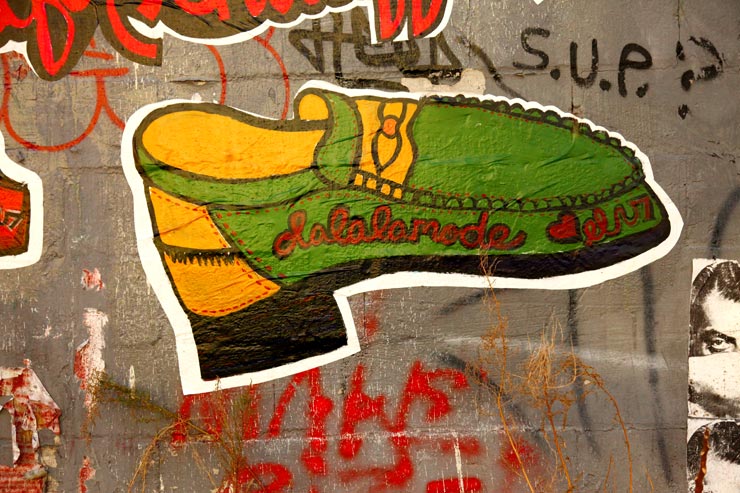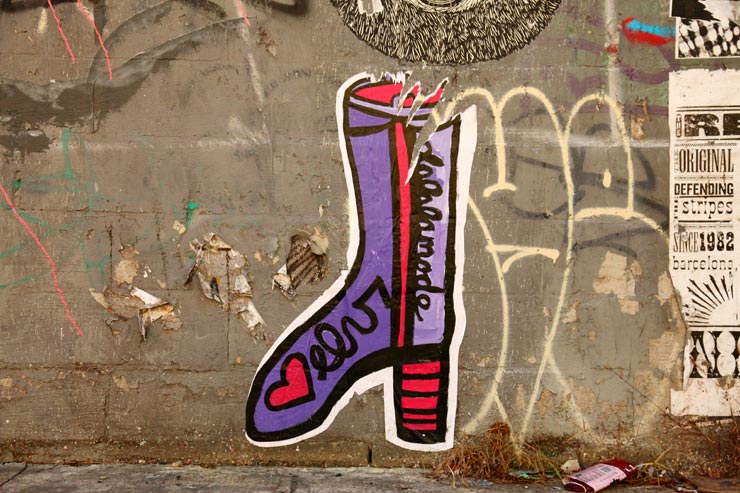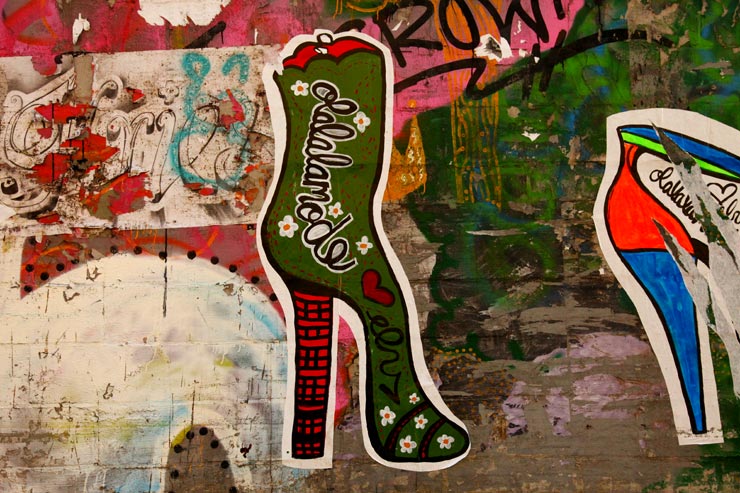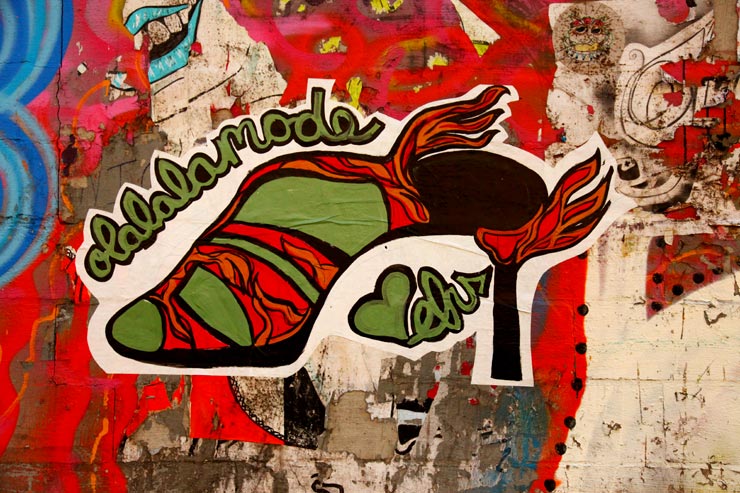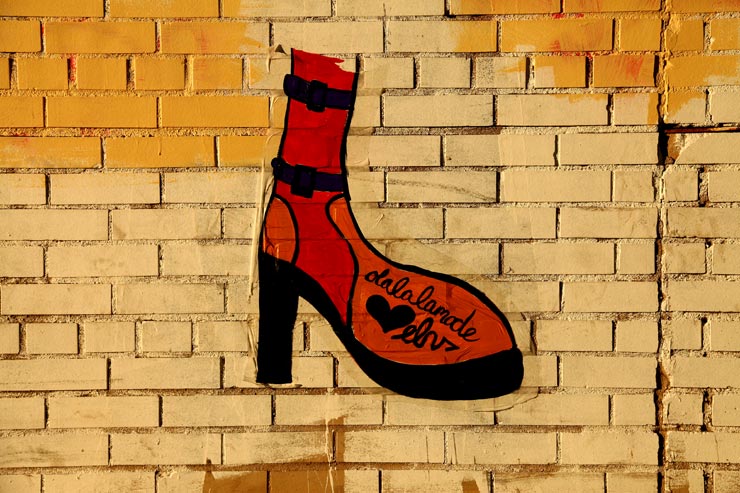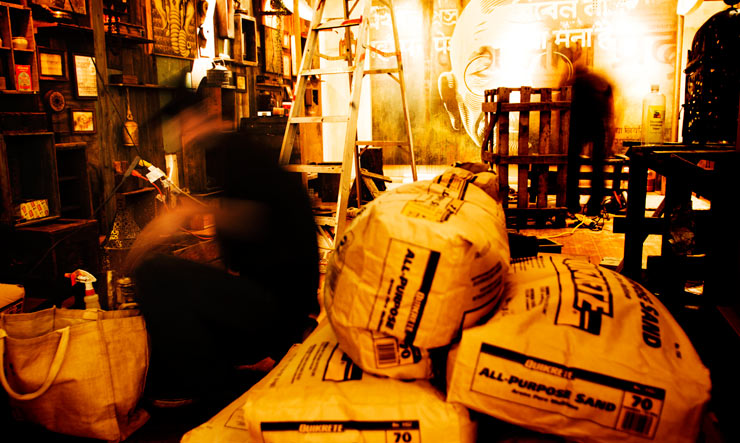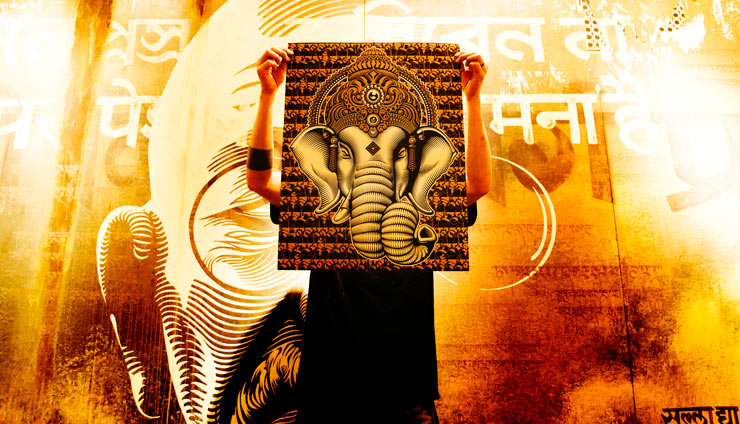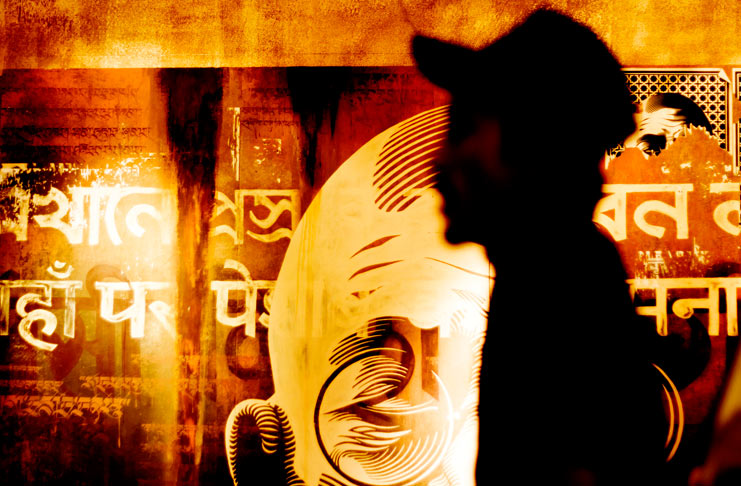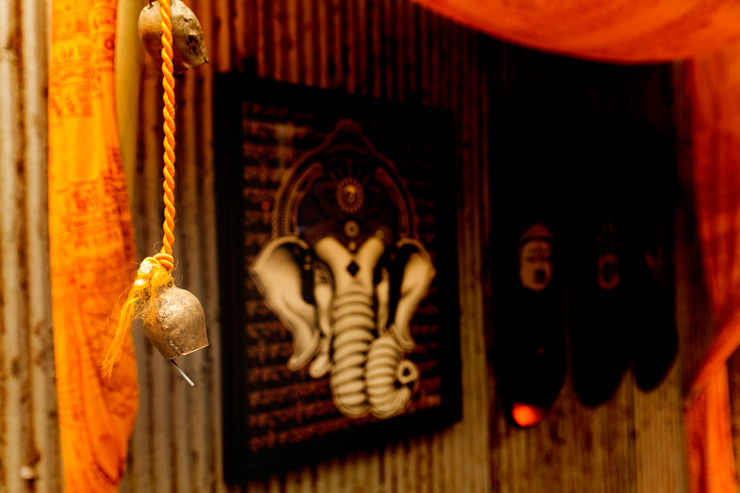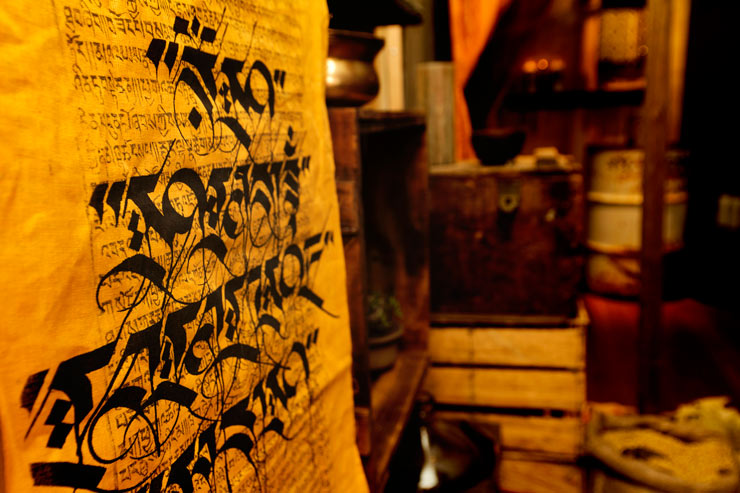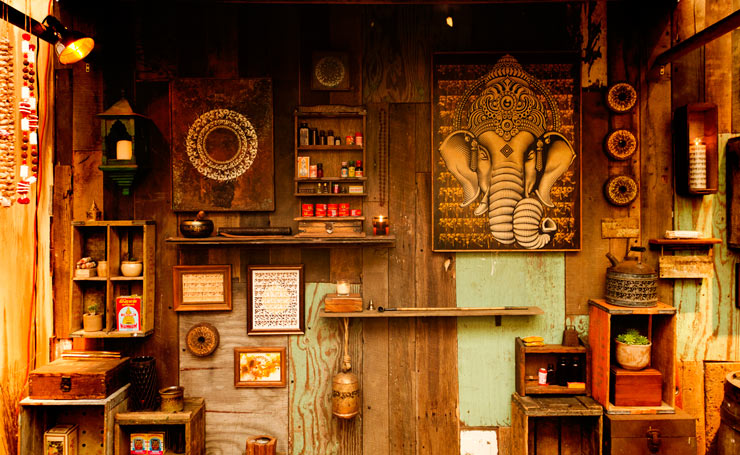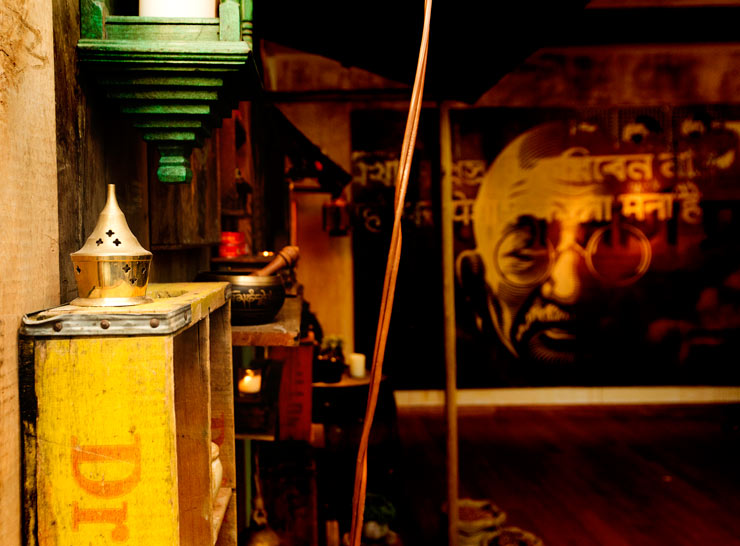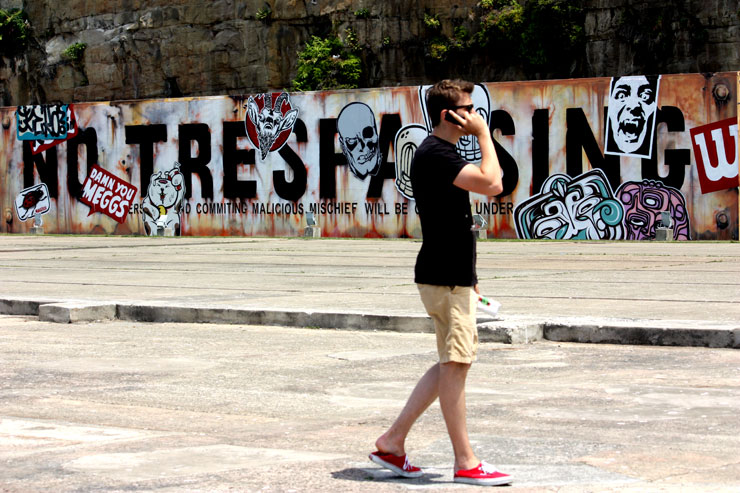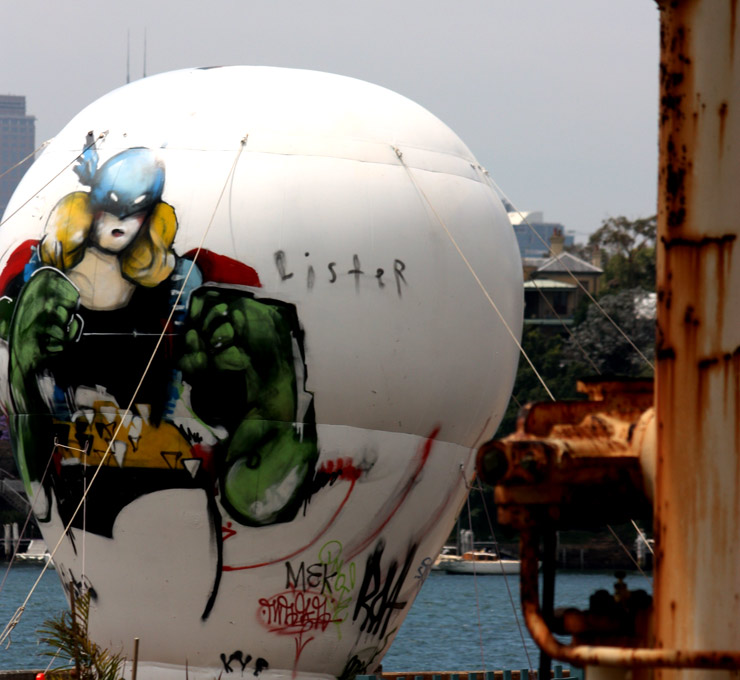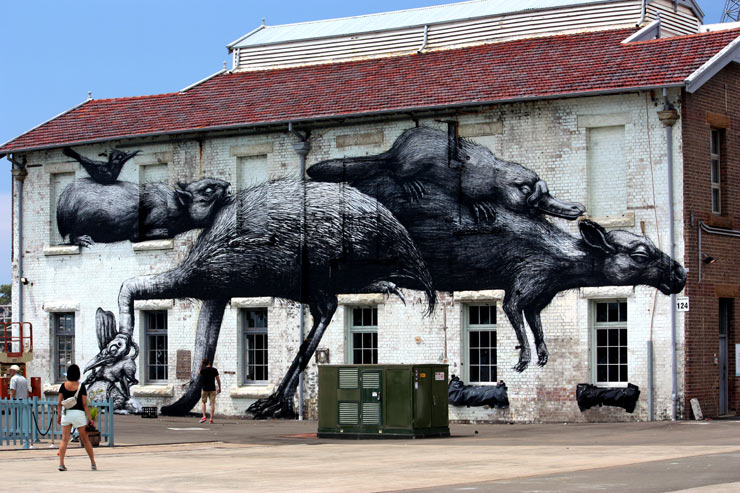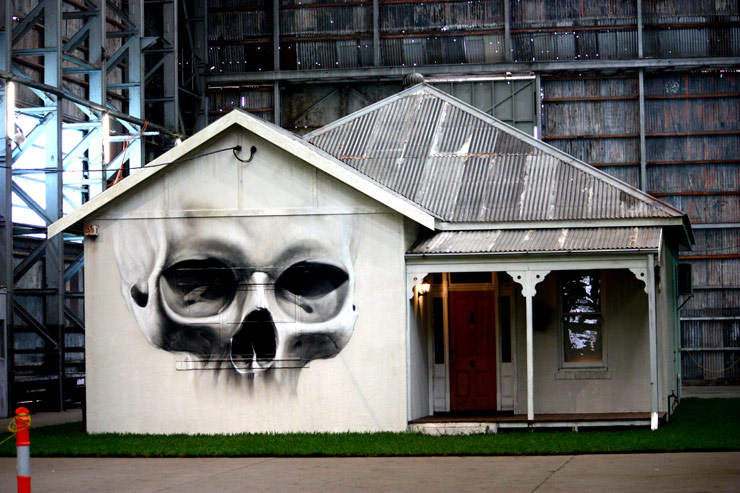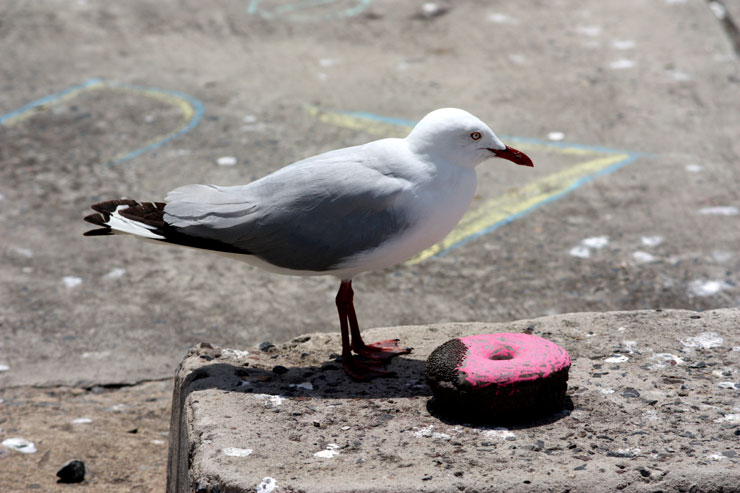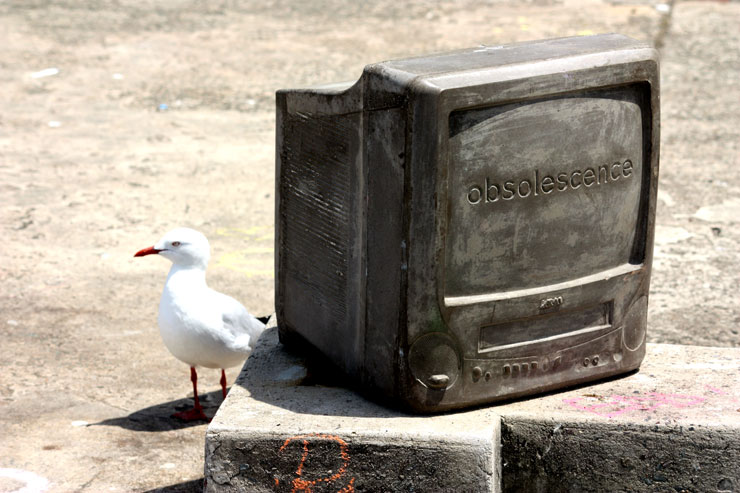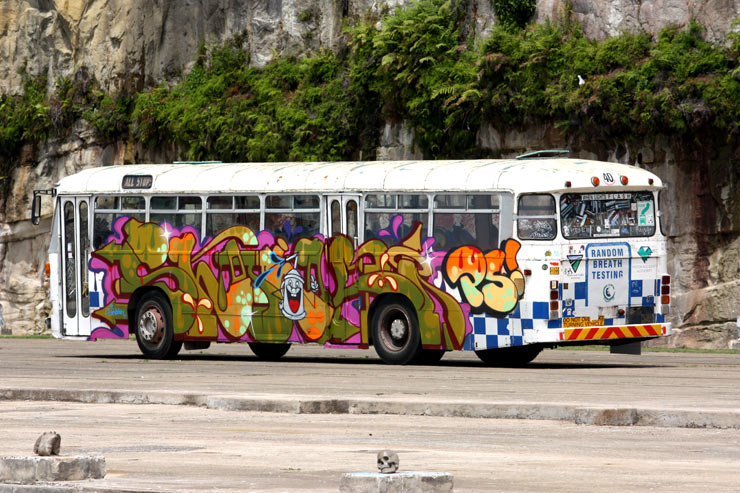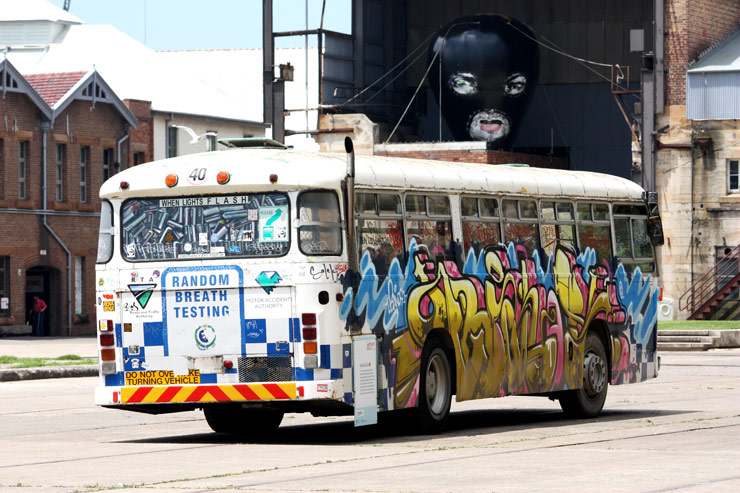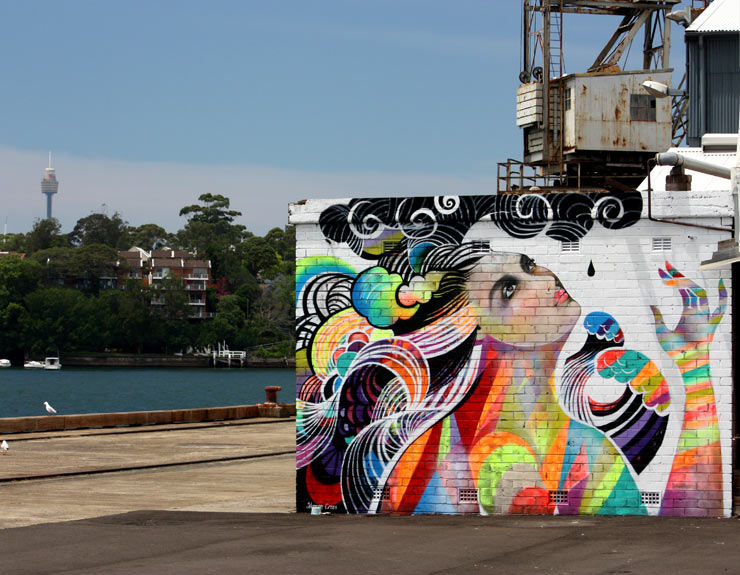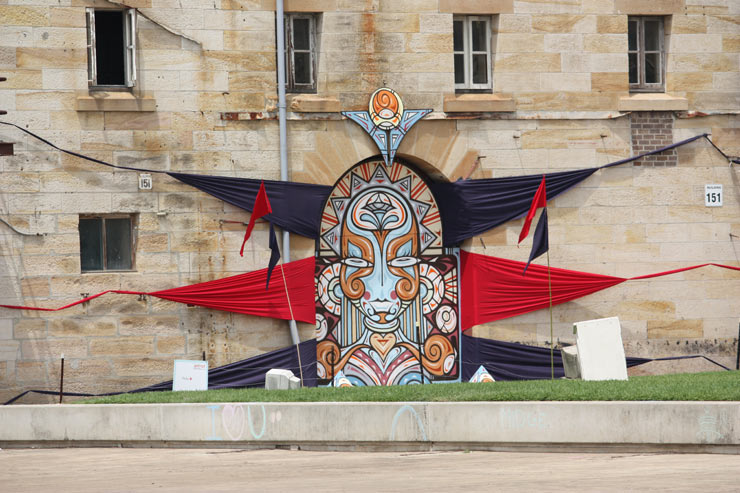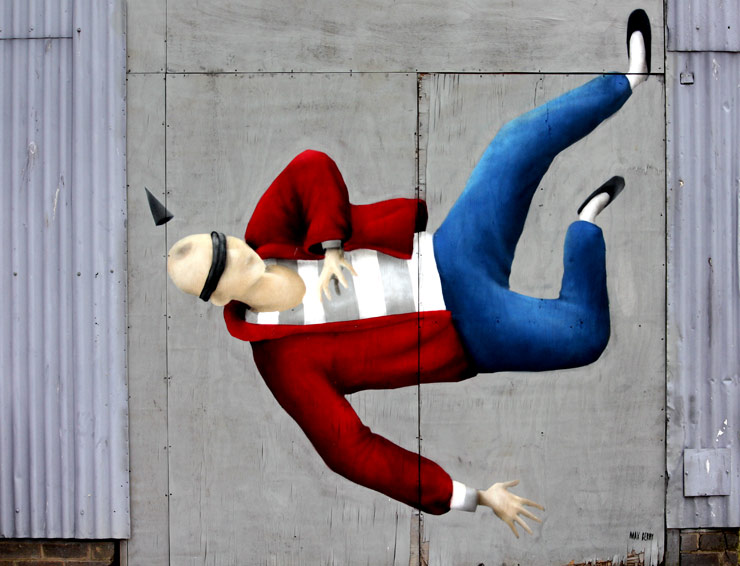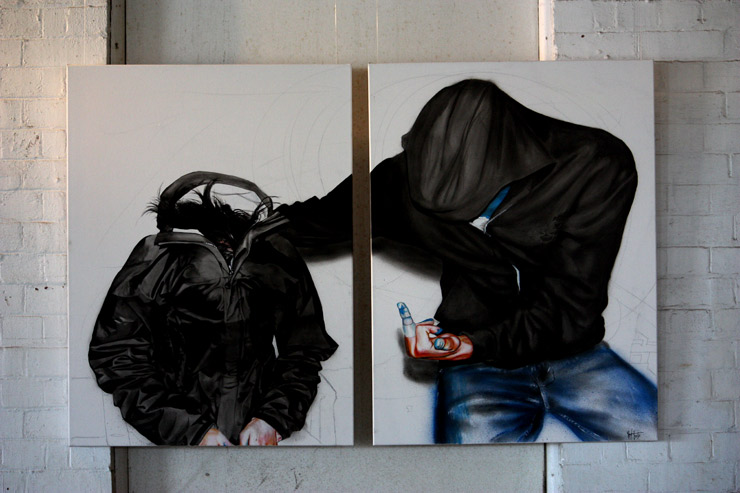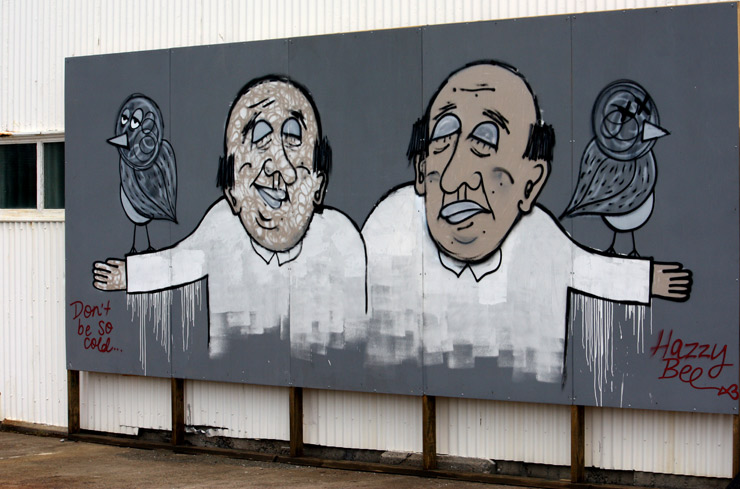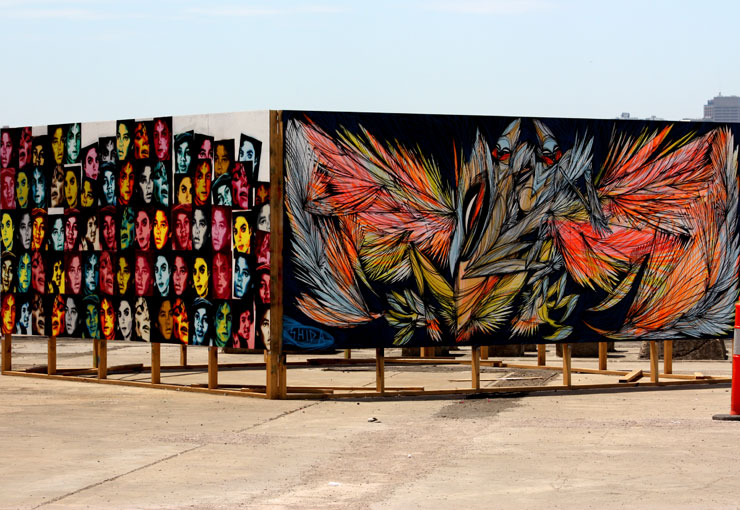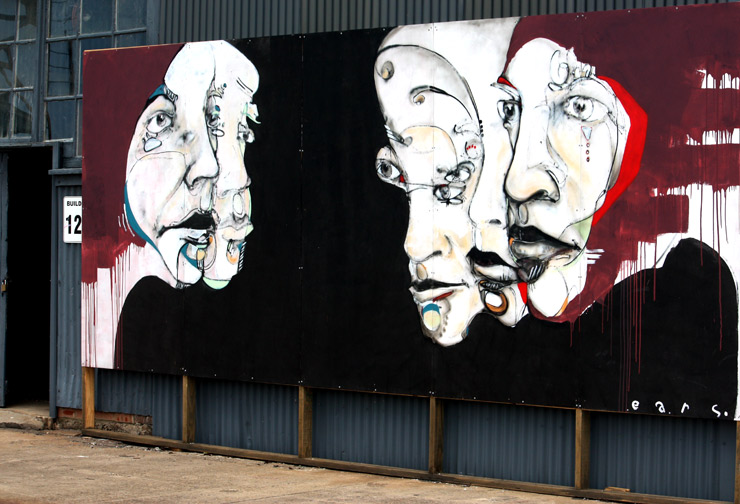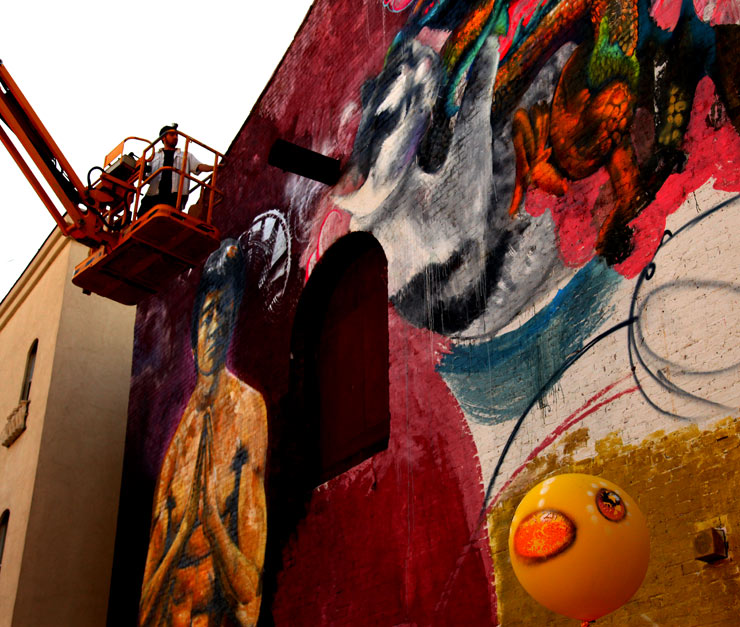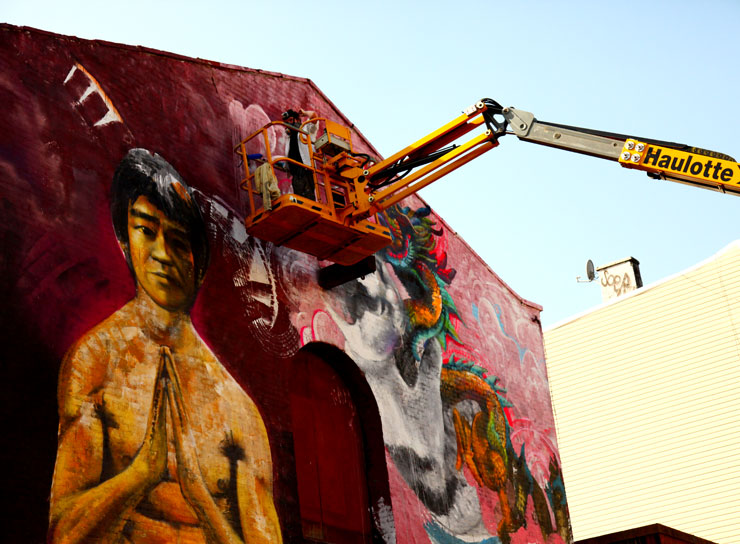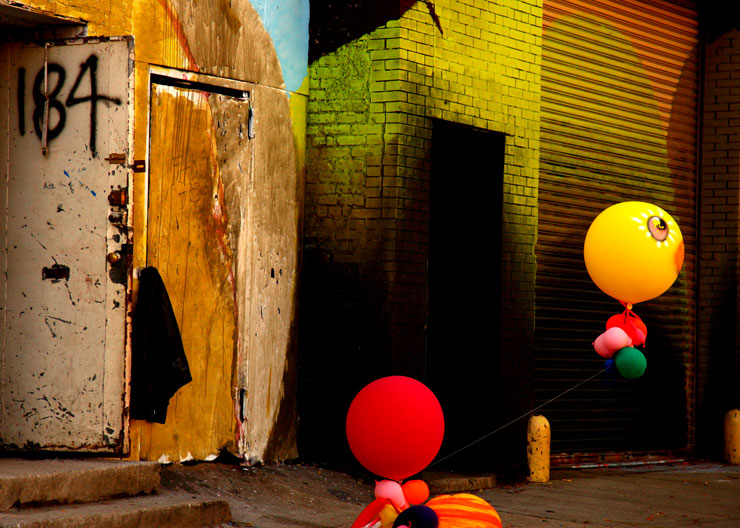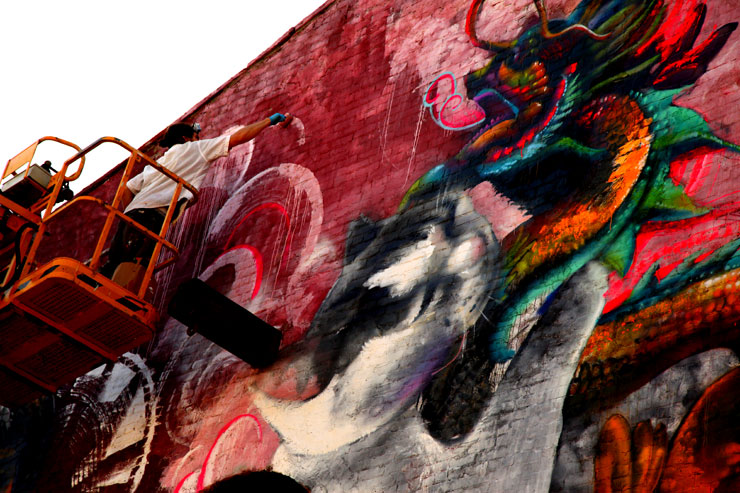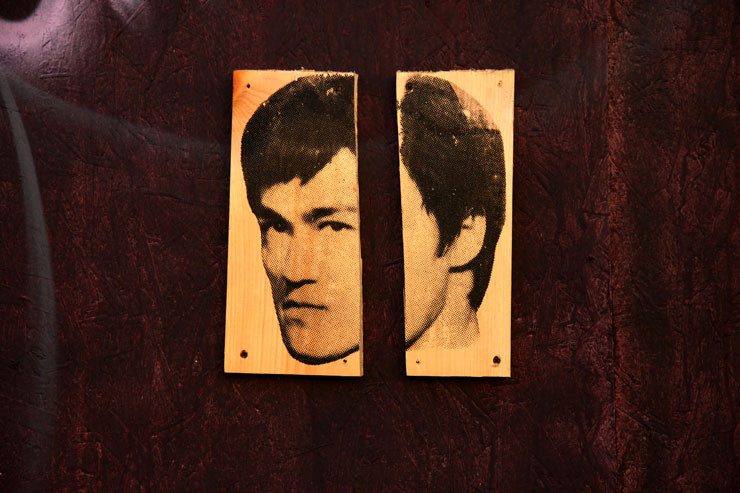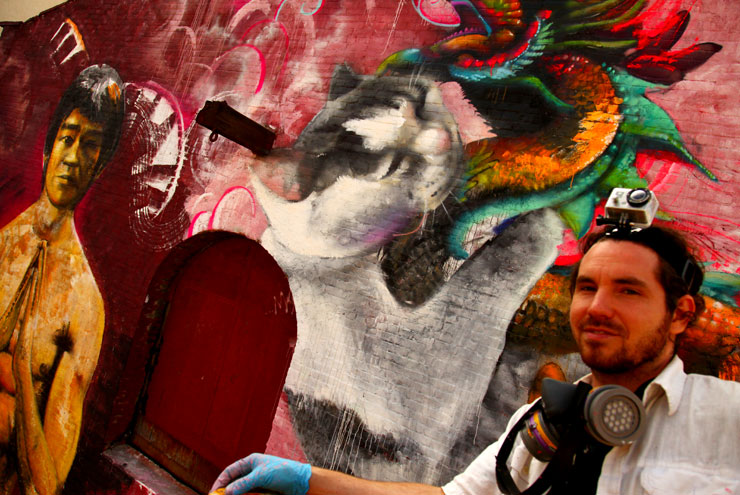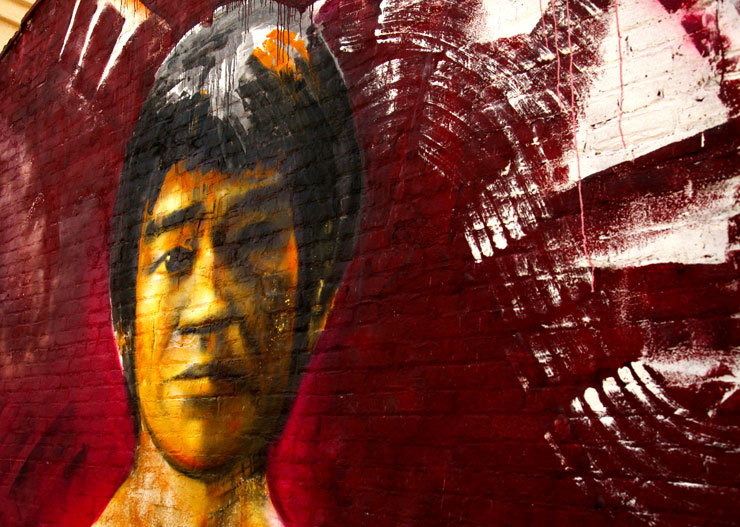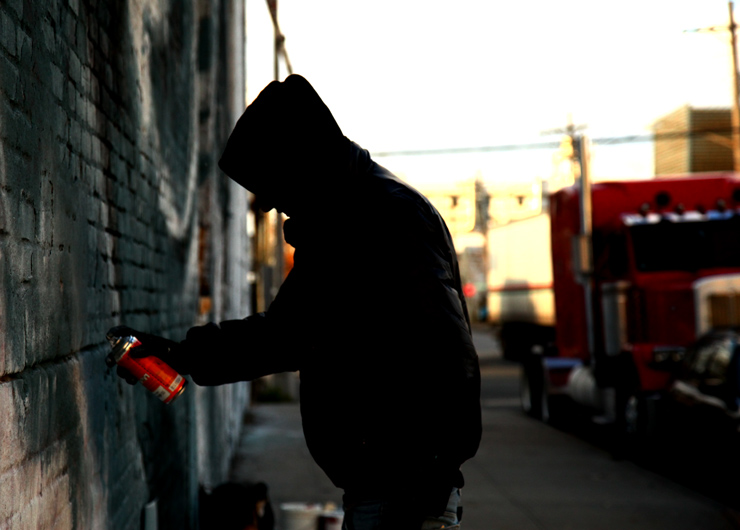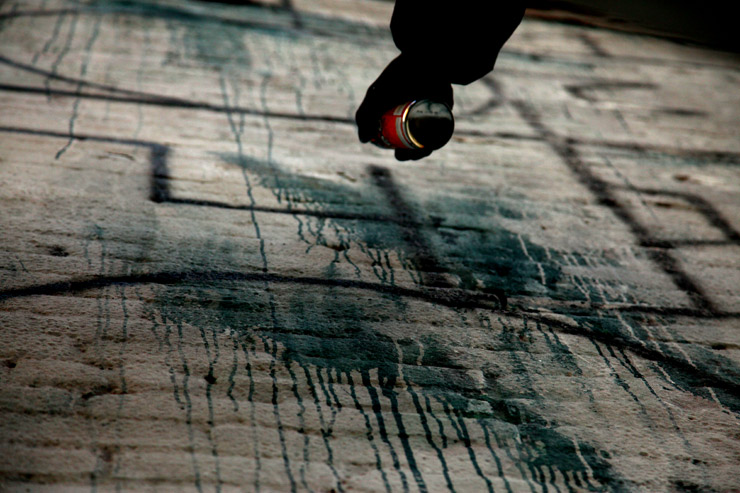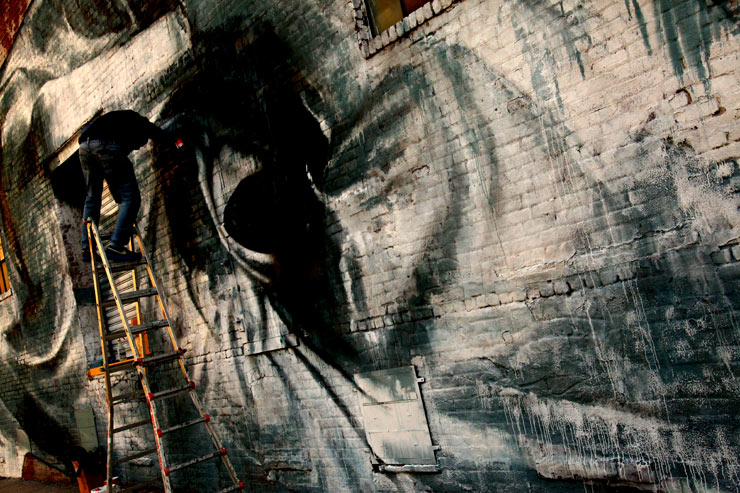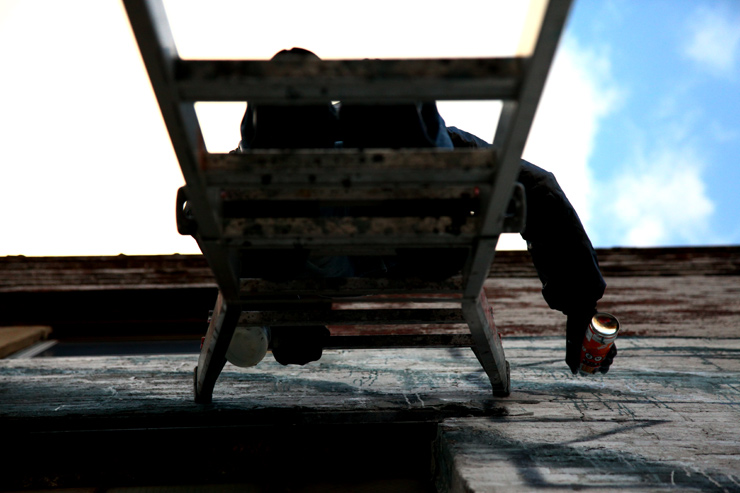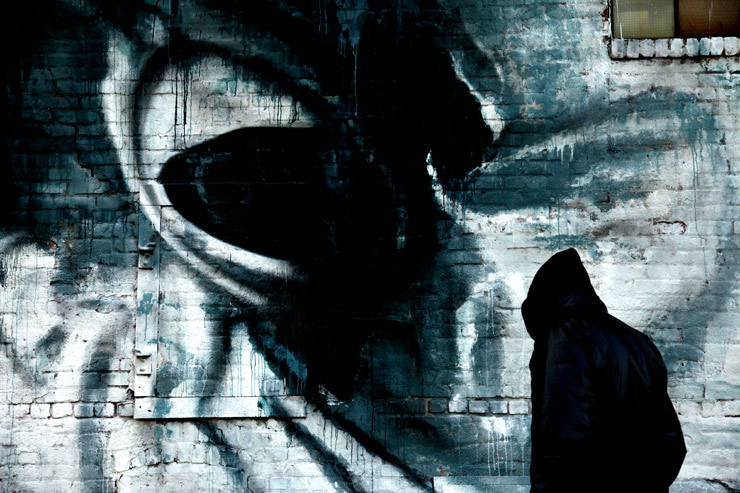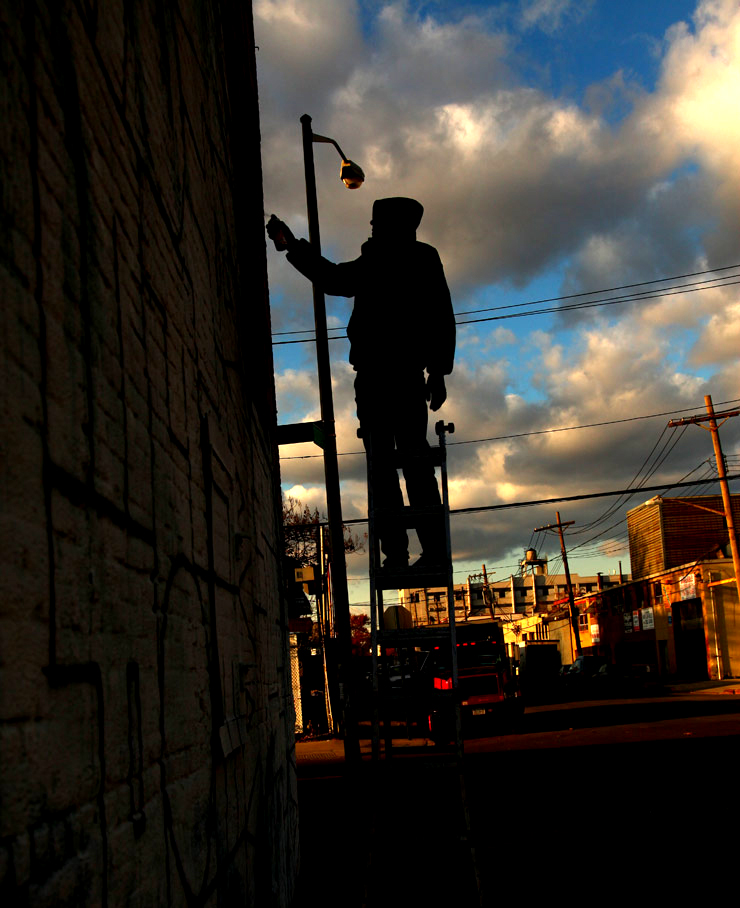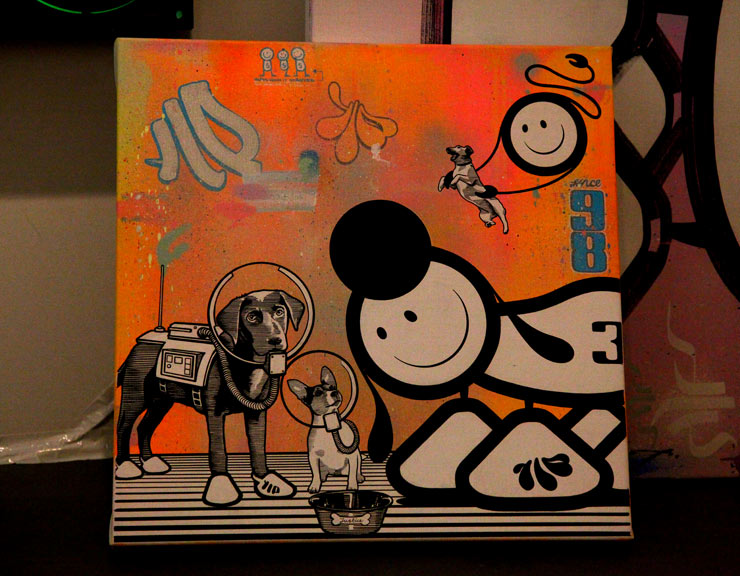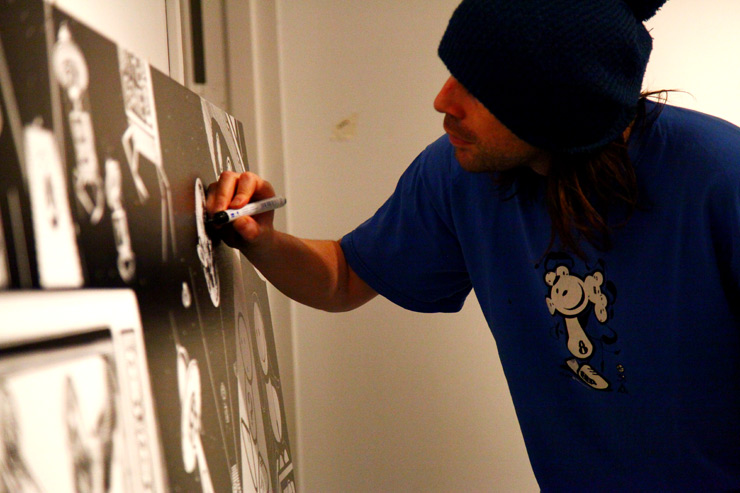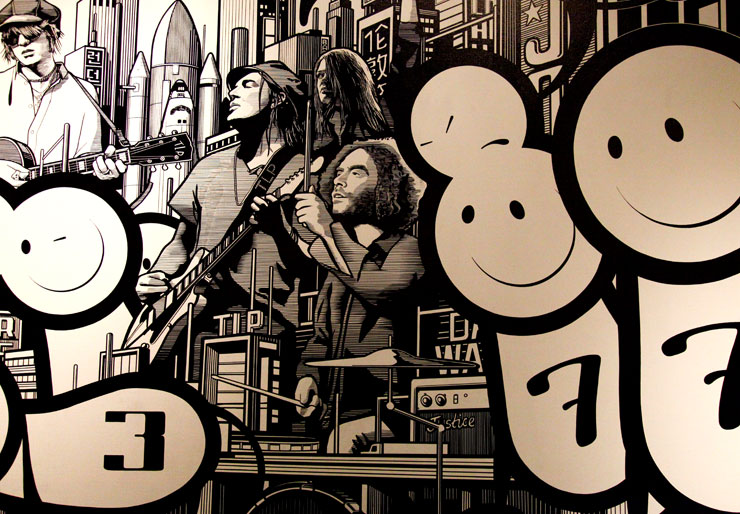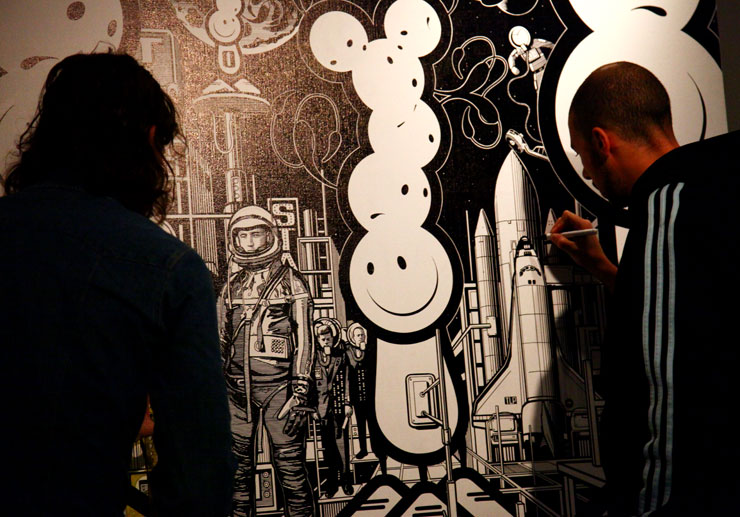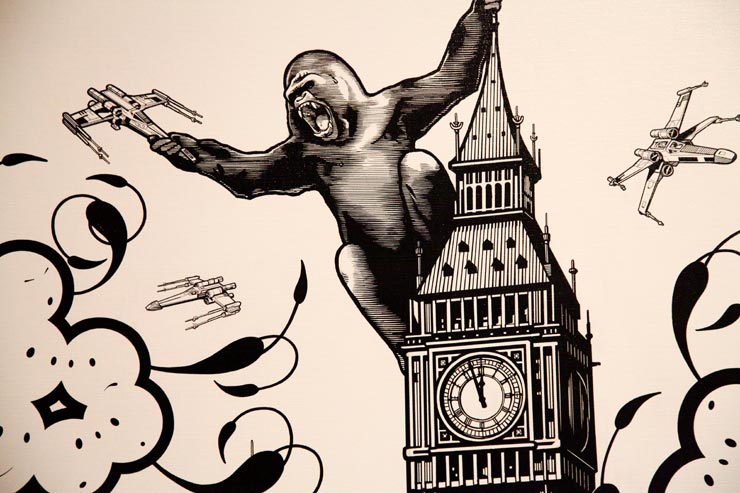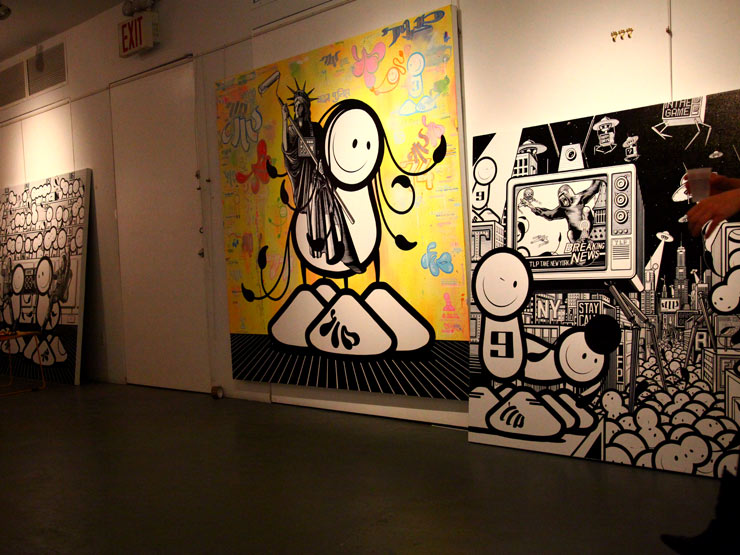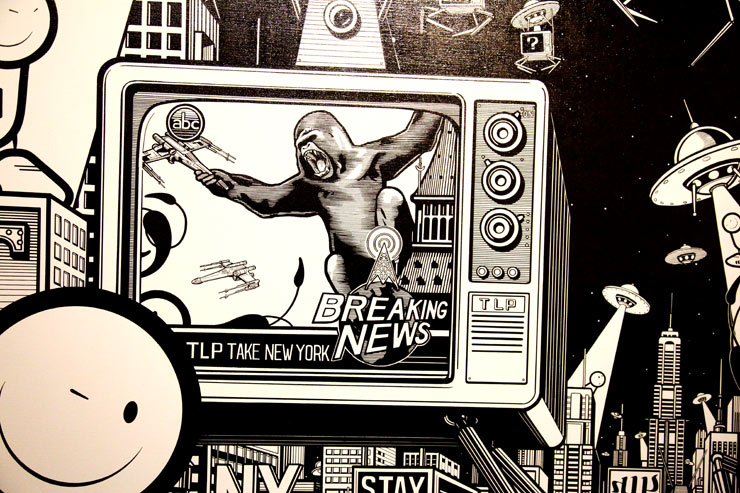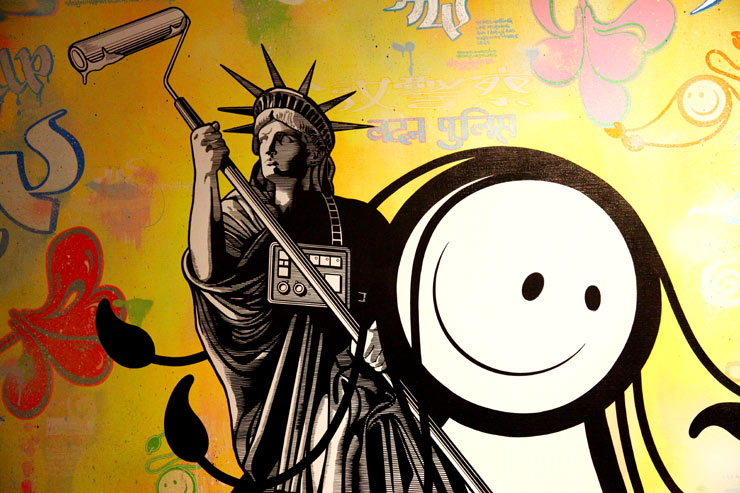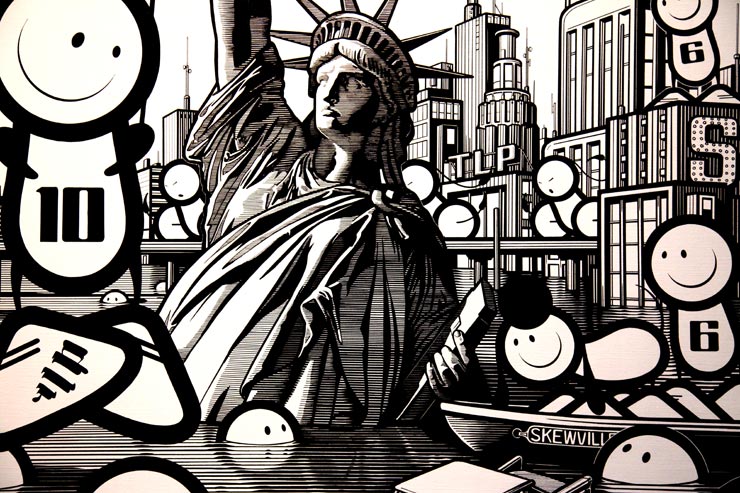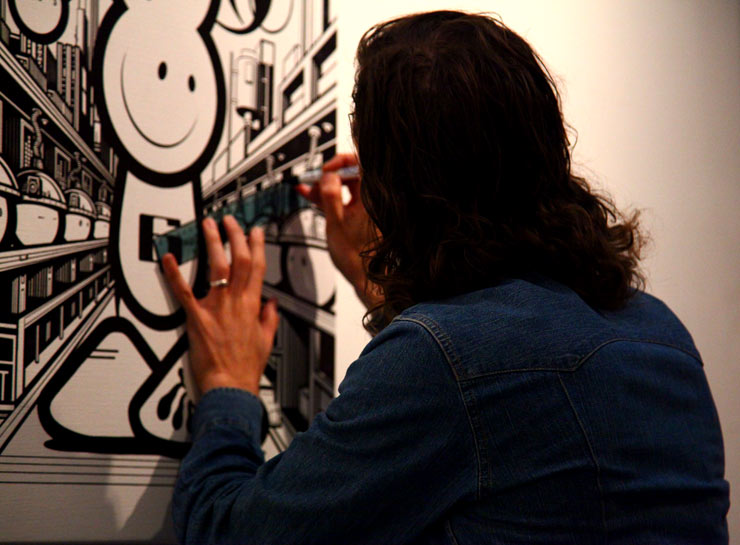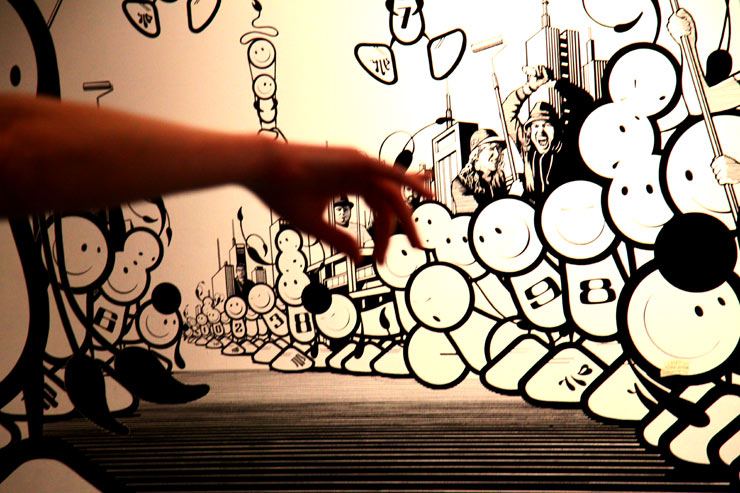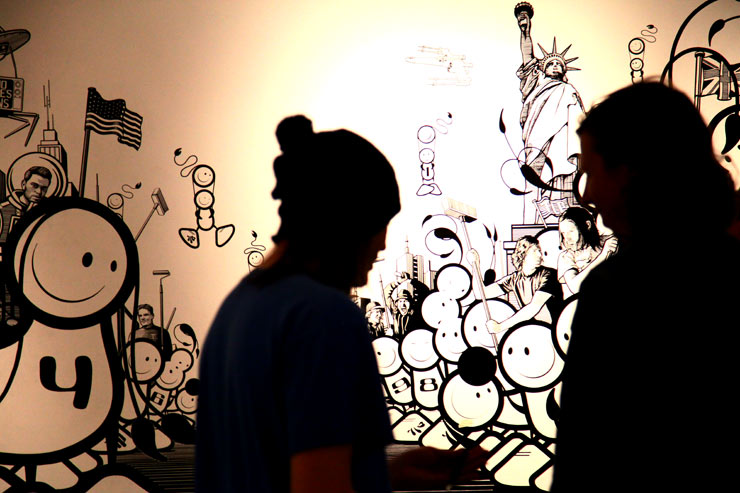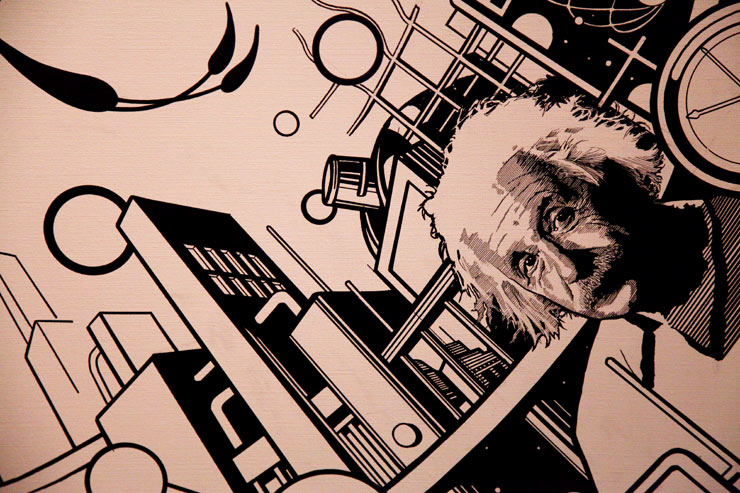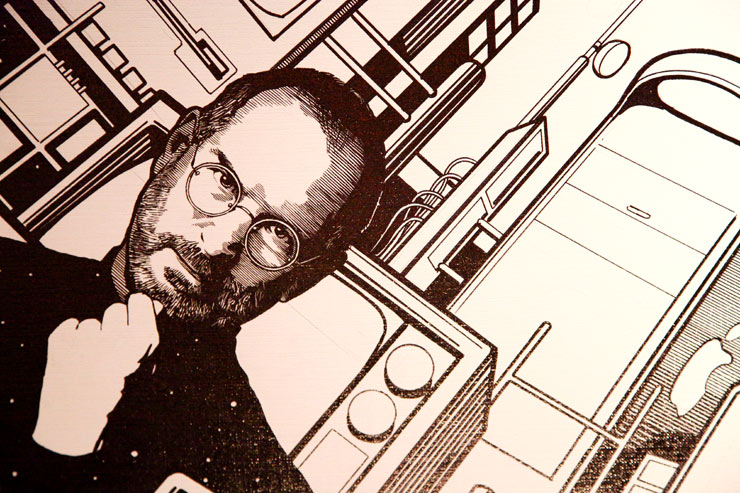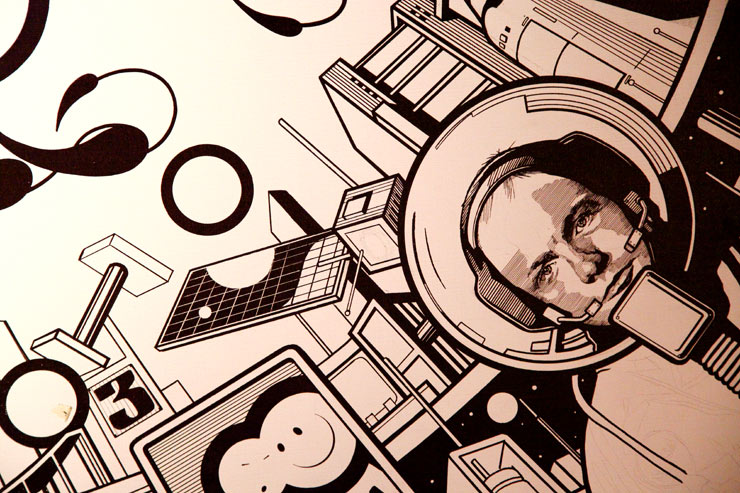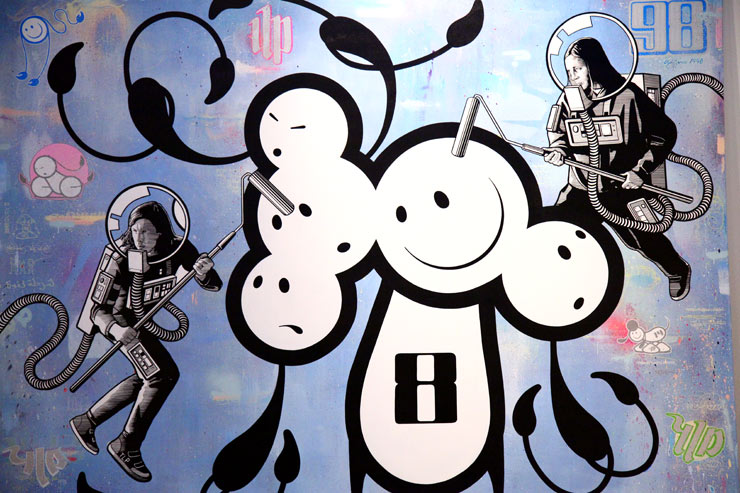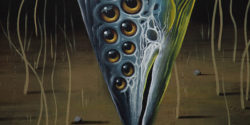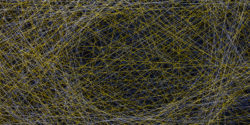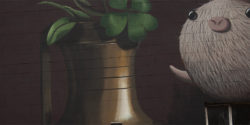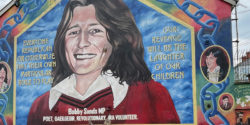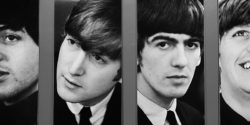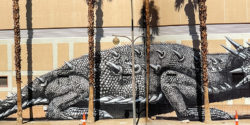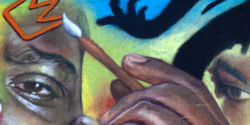Many paradoxical words and conflicting terms can be found within and applied to Radical’s art: Cute and disturbing. Humorous and distraught. Compassionate and brutal. It’s a kind of Whimsical Hardcore. Hello Kitty Horror. Rural Graff.1 Underground Street Art Cartooning.
Yet, even though this string of vocabulary is conflicted as it proceeds to connect, the chain still contains a pulse of veracity. When first approaching Radical’s murals or gallery work, the color palette and cartoony style betray and instill a sense of fun and frivolity. On closer examination the ragged line, pock-marked surfaces, grimy found materials, and gory scenarios unsettle at a deeper level. This kind of contradiction within the elements of style and tone belie a poetic voice that entertains as well as stimulates further reflection.
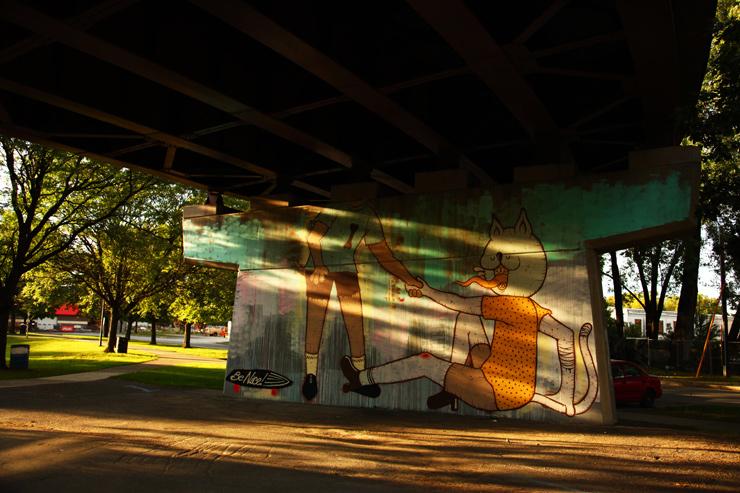
Radical! (photo © Jaime Rojo)
The paintings are full of personal themes and motifs that will also be read as cultural commentary. As an example, in a video2 made during his first show in NYC at the Munch Gallery in 2011, Radical shares that he was diagnosed as having ADHD in kindergarten and since then has been on medication for it. So the consistent recurrence of capsules throughout his work is an expression of his personality and part of where the art comes from. Of course, in public on a wall or canvas the pills will be seen as symbols to be analyzed and interpreted through a societal lens as metaphor. This is where the poetry of his imagery comes into play with multiple interpretations bulging within the imagery, kicking like embryos in a womb. Are the pills just our sedatives or our salvation? Is science advancing our cause as aspirational animals or mutating us into empty borgs? Are they a new tool, like the discovery of fire, that will immolate or protect us?
Radical! (photo © Jaime Rojo)
Utilizing elements of graffiti and street art, illustration and painterly expressionism, cartooning and fable, Radical parades a cast of animals and humans, sometimes one and the same, marching, dancing, limping, crawling, swimming, through a dystopian, rurban3 American landscape where a visionary disillusionment and painful joy reign. These ragged and damaged looney toons literally are the walking wounded: missing limbs, vomiting their own insides, swimming in pills, spinning their heads on their necks like tops. They struggle with existence and yet seem oddly adapted to it and happy about it.
Radical! (photo © Jaime Rojo)
The following interview with Radical and the photographs of his art reveal a young, fanciful and thoughtful man with a high level of facility at his craft. He has found a strong visual voice that has already resonated quickly through the street art and gallery communities. At the end of this interview and in another,4 he has expressed his desire to paint an oval-shaped water tower like a cheeseburger. Maybe it seems like a joke, but we here at Brooklyn Street Art are taking it as a serious request and ask that someone step up to provide just such a canvas. We would love to see a pill burger water tower surveying over all!
Daniel Feral: Where did you grow up?
Radical! : SLC Utah and Cleveland Ohio were my places of upbringing. They’re both really awesome.
Daniel Feral: When did you start making art as a kid?
Radical! : Just really early on when I became physically capable of holding any sort of drawing utensil. Kind of a typical “artsy” kid thing. It has stuck with me my whole life from the beginning. It’s the one thing that hasn’t come as some sort of fad or phase in my life.
Radical! (photo © Jaime Rojo)
Daniel Feral: When did you start doing art on the street?
Radical! : Around the end 2006.
Daniel Feral: Did you study art in high school or college?
Radical! : Currently studying right now. High school art classes were fun but I never really took them too seriously, not to say that they weren’t an important asset to where I am with my creative pursuits today.
Radical! (photo © Jaime Rojo)
Daniel Feral: What other kinds of things did you do or were interested in that influenced you as a person and artist?
Radical! : As with a lot of people, music and skateboarding etc. I got a lot of influence from album artwork by people like Raymond Pettibon. I think another great influence on me as an artist and a person was my family and the way I was raised. Growing up, me and my brother weren’t allowed to have video games and many of the “easy ways out” parents would give children to satisfy them. This led to me being outside playing a lot, and with what we had we would always be using our imaginations. I feel like this type of exposure to my surroundings has influenced me greatly as a person and an artist. I still have a desire to creatively interact with my environment to this day
Daniel Feral: Do you feel allegiance to graffiti or street art? Is there a distinction for you?
Radical! : Having been involved in both areas, I have come to have a different kind of love for each. I can also see why writers would hate street art. The subject of defining the two is very difficult for me. I still can’t really decide if the distinction between the two should be made by the way it looks, or by the materials used and the context the act is done in. A good friend and I were having a conversation on whether the characters Twist spray-painted (illegally) were graffiti or street art. He claimed that they were street art because they were characters, where as I was claiming them to be graffiti because of the context they were done in such that they were done illegally with spray paint, and that graffiti didn’t have to be limited to being letters.
Some pretty clear differences to me is that graffiti really only speaks to other writers aside from it being done for self-satisfaction and visual ownership. To society it is just a look. That is why any random person probably wouldn’t know the difference between good graffiti and bad graffiti. As long as it looks like graffiti, it’s either offensive or dope to them. Street art has the potential to speak to everyone. It’s less exclusive in a sense. Also I don’t really consider graffiti to be art, nor would I want it to be art. Art is a whole other world of its own.
Radical! (photo © Jaime Rojo)
Daniel Feral: Why are the freights so important to you?
Radical! : Because they rule.
Daniel Feral: Who are your running partners? Are you part of a crew?
Radical! : Crews are cool. They can be another set of letters to get creative with and throw up than just your name. I dislike anything revolving around a gang mentality. That’s as far as I want to comment on a crew, ha ha. My partners and beloved friends all know who they are.
Daniel Feral: You seem to have a few different styles. How did that come about? Do they apply to certain kinds of situations or do you just enjoy exploring different aesthetic directions all at once?
Radical! : I’d say they apply to certain situations. With my artwork the way it looks is something that has involuntarily developed over time. It’s a strange set of rules I’ve gradually developed. I’ve been refining some of the visual aspects of the work while trying to progress the imagery without having more than it needs through the ideas being explored behind it all.
Radical! (photo © Jaime Rojo)
Daniel Feral: You recently had a show in NYC. Where was it and how did it go?
Radical! : Yes I did! It was at the Munch gallery on the corner of Broome and Ludlow in the Lower East Side. It was an extraordinarily awesome experience beyond what I had anticipated. It was also a great learning experience being able to display my work in a very professional setting. Also hopefully I will finally get a damn car from the work I sold.
Daniel Feral: What are your goals as an artist on the street?
Radical! : To make people feel happy, or feel something at all. But also kind of the complete opposite of that. I feel like the street is a place where work can be, and at times should be abrasive. The idea of putting something on the street without ultimately giving a sh*t is pretty jolting in a way. Also, who is going to let you legally paint a giant uzi with a syringe coming out of it, no matter what the meaning behind it is, on their building?
Radical! (photo © Jaime Rojo)
Daniel Feral: What are your goals as an artist in galleries?
Radical! : To further explore ideas as an artist, and to not be afraid to break the set of rules I’ve created for my work. Also I would like to slow down and focus longer on specific subjects rather than having a broad range of them. A big struggle I’m having with myself is wanting to keep the imagery engaging and visually pleasing without it obstructing the ideas being conveyed through my work.
Radical! (photo © Jaime Rojo)
Daniel Feral: Whats coming in the future?
Radical! : More school, more work, hopefully more shows. And maybe someday I’ll get to paint an oval water tower to look like a giant cheeseburger.
<<<>>>BSA>><<<>>><BSA<<<>>>BSA>><<<>>><BSA<<<>>>BSA
Footnotes from the introduction:
1 An essay by Daniel Feral is in progress elaborating on this term, which stems from an analysis of the subcultural phenomenon that inspired it.
2 Quote from a video shot for Radical’s “Upside Down Frowns” exhibition, Munch Gallery, Oct. 21 – Nov. 20, 2011 posted on ArtFuse.com.
3 Definition: (a) A mix of the rural and the urban. (b) Any geographic environment that is not a very large city, such as NYC, Philadelphia, LA, London, Tokyo, etc., in which its local residents attempt to apply mores or aesthetics of urban culture to similar elements in their environs. (c) A conceptual geographic space that contains the rural and the urban, and attempts to map the cultural interplay between the two. An example of a cultural telemetry that would be scored across this conceptual environment would be the trajectory of fetishism and dissemination of the now mythological graffiti subway culture in NYC in the 1970s by media, in particular the movie Style Wars, and its application to freight trains in a rural environment. These mythic ideals are then morphed to fit the various rural locales and become living metaphors of said NYC subway graff culture.
4 “Back Talk: A Conversation with Radical,” conducted by Steven P. Harrington and Jaime Rojo, appearing on the Juxtapoz website on Monday, August 8, 2011.
<<<>>>BSA>><<<>>><BSA<<<>>>BSA>><<<>>><BSA<<<>>>BSA
Contributing writer Daniel Feral
Daniel Feral is a writer, designer, historian and theoretician, who studied literature and writing in college. Afterwards, working as a designer by day, he continued his studies in the library and on the streets at night — where his friends were taking action to transmit the most direct, resonant and radical art at the turn of the new millennium. He has lectured at the School of Visual Arts, Brooklyn Academy of Urban Planning, University of Southern California and Remsenburg Academy of Art. Email: feral@pantheonprojects.comFor more about Radical!
See his Flickr and Tumblr pages.
Back Talk with BSA and Radical on Juxtapoz
‘Upside Down Frowns’ exhibition at Munch Gallery Works by RADICAL! on Artfuse
 BROOKLYN STREET ART LOVES YOU MORE EVERY DAY
BROOKLYN STREET ART LOVES YOU MORE EVERY DAY